Tait TMBH7A Mobile Transciever User Manual TM9300 User s Guide
Tait Limited Mobile Transciever TM9300 User s Guide
Tait >
Exhibit D Users Manual per 2 1033 c3

TM9300
DMR Mobile Radios
User’s Guide
MMB-00001-02 · Issue 2 · October 2013
Contents 3
Contents
For your safety........................................................ 7
Menu maps............................................................ 16
1 About this guide .................................................. 18
Safety warnings used in this guide ................................. 18
Related documentation................................................... 19
2 Getting started ..................................................... 20
About DMR digital radios................................................ 21
About the radio controls.................................................. 22
Understanding the radio display ..................................... 25
Understanding the radio indicators................................. 27
Using function keys to access frequently used features. 29
Navigating the radio’s menus ......................................... 30
Using the alphanumeric keys to search a list ................. 32
3 Basic operation .................................................... 33
Turning the radio on and off ........................................... 34
Adjusting the speaker volume ........................................ 35
Locking and unlocking the keypad ................................. 36
Changing the radio’s operating mode............................. 37
4 Operating in trunked mode ................................. 38
Checking that your network is available ......................... 39
Changing your network................................................... 39
Making a preset call........................................................ 40
About trunked zones and workgroups ............................ 42
About emergency operation ........................................... 45
Dialing a PABX number.................................................. 47
Dialing a PSTN number.................................................. 47
Receiving a call .............................................................. 48
Re-establishing a call ..................................................... 49
Checking missed calls .................................................... 50
About status messages .................................................. 52
About trunked text messages ......................................... 54
Placing the radio in do-not-disturb mode........................ 57
Calls to conventional channels or conventional groups.. 58
5 Dialing calls in trunked mode ............................. 59
MPT 1343 dialing............................................................ 60
Nokia ANN fleet calls...................................................... 62
Accessing common trunking functions ........................... 64
6 Operating in conventional mode ........................ 66
4 Contents
Selecting a zone............................................................. 67
Selecting a channel........................................................ 68
Selecting a group ........................................................... 69
Checking that a channel is clear .................................... 70
Making a call .................................................................. 71
Making a call using the address book ............................ 72
Making a local call.......................................................... 73
Connecting to a telephone network................................ 74
Making an emergency call.............................................. 76
Sending a status message............................................. 76
Transmitting at low power .............................................. 77
Ending active calls.......................................................... 78
Activating the repeater before a call............................... 79
Communicating directly with other radios....................... 80
Receiving a call .............................................................. 81
Receiving a text message .............................................. 81
Hearing faint and noisy signals ...................................... 82
Using the radio in different repeater areas ..................... 83
Scanning a group of channels........................................ 84
7 GPS location services ..........................................91
About GPS location information ..................................... 92
About GPS status information........................................ 92
Viewing GPS information ............................................... 93
8 Loneworker monitoring .......................................94
Activating loneworker monitoring ................................... 94
Responding to a loneworker alarm................................. 95
9 Customizing radio settings .................................96
Changing the volume of all audible indicators................ 97
Changing the volume of keypress tones ........................ 97
Changing to quiet operation ........................................... 98
Changing to silent operation........................................... 98
Changing the external alert option ................................. 99
Turning on backlighting .................................................. 99
Adjusting the display contrast....................................... 101
10 Troubleshooting .................................................102
About troubleshooting .................................................. 103
Checking the version of your radio............................... 104
General care................................................................. 105
Directive 1999/5/CE Declaration of Conformity 106
Tait Software Licence Agreement......................107
5
Copyright and trademarks
All information contained in this document is the property of
Tait Limited. All rights reserved. This document may not, in
whole or in part, be copied, photocopied, reproduced,
translated, stored, or reduced to any electronic medium or
machine-readable form, without prior written permission
from Tait Limited.
The word TAIT and the TAIT logo are trademarks of Tait
Limited.
All trade names referenced are the service mark, trademark
or registered trademark of the respective manufacturers.
Disclaimer
There are no warranties extended or granted by this
document. Tait Limited accepts no responsibility for
damage arising from use of the information contained in the
document or of the equipment and software it describes. It
is the responsibility of the user to ensure that use of such
information, equipment and software complies with the
laws, rules and regulations of the applicable jurisdictions.
Enquiries and comments
If you have any enquiries regarding this document, or any
comments, suggestions and notifications of errors, please
contact your regional Tait office.
Updates of manual and equipment
In the interests of improving the performance, reliability or
servicing of the equipment, Tait Limited reserves the right to
update the equipment or this document or both without
prior notice.
Intellectual property rights
This product may be protected by one or more patents or
designs of Tait Limited together with their international
equivalents, pending patent or design applications, and
registered trade marks: NZ 409837, NZ 409838, NZ 415277,
NZ 415278, NZ 508806, NZ 508807, NZ 511155,
NZ 516280/NZ 519742, NZ 520650/NZ537902, NZ 521450,
NZ 524369, NZ 524378, NZ 524509, NZ 524537, NZ 530819,
NZ 534475, NZ 534692, NZ 537434, NZ 547713, NZ 569985,
NZ 577009, NZ 579051, NZ 579364, NZ 580361/NZ 601933,
NZ 584534, NZ 586889, AU 2003281447, AU 2004216984,
AU 2010212364, AU 11677/2008, AU 13745/2008,

6
CN 200930004199.5, CN 1031871, CN 1070368,
CN 200930004200.4, CN 200930009301.0,
CN 201110141630, CN 201110253742.1, EU 000915475-
0001, EU 000915475-0002, GB 2413249, US 5,745,840,
US 7,649,893, US 7,758,996, US7,937,661, US 8,301,682,
US 10/597339, US 29/401234, US 29/401235,
US 61/218015, US 61/236663, US 61/323437.
This product may also be made under license under one or
more of the following U.S. Patents: 5,146,497, 5,148,482,
5,164,986, 5,185,795, 5,185,796, 5,271,017, 5,377,229
and 5,502,767.
The AMBE+2™ voice coding Technology embodied in this
product is protected by intellectual property rights including
patent rights, copyrights and trade secrets of Digital Voice
Systems, Inc. This voice coding Technology is licensed
solely for use within this Communications Equipment. The
user of this Technology is explicitly prohibited from
attempting to decompile, reverse engineer, or disassemble
the Object Code, or in any other way convert the Object
Code into a human-readable form. Protected by U.S.
Patents 5,870,405, 5,826,222, 5,754,974, 5,701,390,
5,715,365, 5,649,050, 5,630,011, 5,581,656, 5,517,511,
5,491,772, 5,247,579, 5,226,084 and 5,195,166.
Environmental responsibilities
Tait Limited is an environmentally responsible company
which supports waste minimization, material recovery and
restrictions in the use of hazardous materials.
The European Union’s Waste Electrical and Electronic
Equipment (WEEE) Directive requires that this product be
disposed of separately from the general waste stream
when its service life is over. For more information about
how to dispose of your unwanted Tait product, visit the Tait
WEEE website at www.taitradio.com/weee. Please be
environmentally responsible and dispose through the
original supplier, or contact Tait Limited.
Tait Limited also complies with the Restriction of the Use of
Certain Hazardous Substances in Electrical and Electronic
Equipment (RoHS) Directive in the European Union.
In China, we comply with the Measures for Administration
of the Pollution Control of Electronic Information Products.
We will comply with environmental requirements in other
markets as they are introduced.
For your safety 7
For your safety
Before using your radio, please read the following
important safety and compliance information.
Radio frequency exposure information
For your own safety and to ensure you comply with the
Federal Communication Commission’s (FCC) radio
frequency (RF) exposure guidelines, please read the
following information before using this radio.
Using this radio
You should use this radio only for work-related
purposes (it is not authorized for any other use) and if
you are fully aware of, and can exercise control over,
your exposure to RF energy. To prevent exceeding
FCC RF exposure limits, you must control the amount
and duration of RF that you and other people are
exposed to.
It is also important that you:
■Do not remove the RF Exposure label from
the radio.
■Ensure this RF exposure information accompa-
nies the radio when it is transferred to other users.
■Do not use the radio if you do not adhere to the
guidelines on controlling your exposure to RF.
Controlling your exposure to
RF energy
This radio emits radio frequency (RF) energy or radio
waves primarily when calls are made. RF is a form of
electromagnetic energy (as is sunlight), and there are
recommended levels of maximum RF exposure.
To control your exposure to RF and comply with the
maximum exposure limits for occupational/controlled
environments, follow these guidelines:
8 For your safety
■Do not talk (transmit) on the radio more than the
rated transmit duty cycle. This is important
because the radio radiates more energy when it is
transmitting than when it is receiving.
■While you are transmitting (talking or sending
data) on the radio, you must ensure that there is
always a distance of 35 inches (0.9 m) between
people and the antenna. This is the minimum
safe distance.
■Use the radio only with Tait-approved antennas
and attachments, and make only authorized modi-
fications to the antenna otherwise you could dam-
age the radio and violate FCC regulations.
For more information on what RF energy is and how
to control your exposure to it, visit the FCC website at
www.fcc.gov/oet/rfsafety/rf-faqs.html.
Health Canada warning statement
The installer of this radio equipment must ensure that
the antenna is located or pointed such that it does not
emit an RF field in excess of Health Canada limits for
the general population; consult Safety Code 6,
obtainable from the Health Canada’s website
http://www.hc-sc.gc.ca.
Compliance with RF energy exposure
standards
This two-way radio complies with these RF energy
exposure standards and guidelines:
■United States Federal Communications Commis-
sion, Code of Federal Regulations; 47 CFR §§
1.1307, 1.1310, and 2.1091.
■American National Standards Institute (ANSI) /
Institute of Electrical and Electronic Engineers
(IEEE) C95.1-1992.
■Institute of Electrical and Electronic Engineers
(IEEE) C95.1-1999 Edition.
For your safety 9
■European Directive 2004/40/EC on minimum
health and safety requirements regarding the
exposure of workers to the risks arising from phys-
ical agents (electromagnetic fields).
This radio complies with the IEEE and ICNIRP
exposure limits for occupational/controlled RF
exposure environments at operating duty factors of up
to 50% talk to 50% listen.
Conformité aux normes d’exposition à
l’énergie RF
Cette radio émetteur-récepteur se conforme aux
normes et aux règlements d’exposition à l’énergie
RF :
■La Commission fédérale de la communication des
Etats-Unis, Code de règlements fédéraux (CFR)
Titre 47 Sections 1.1307, 1.1310 et 2.1091 (radios
mobiles) ou 2.1093 (radios portatives).
■American National Standards Institute (ANSI) /
Institute of Electrical and Electronic Engineers
(IEEE) C95. 1-1992.
■Institute of Electrical and Electronic Engineers
(IEEE) C95.1-1999 Edition.
■La directive européenne 2004/40/EC concernant
les prescriptions minimales de sécurité et de san-
té relatives à l'exposition des travailleurs aux ris-
ques dus aux agents physiques (champs
électromagnétiques).
Cette radio se conforme aux limites d’exposition de
l’IEEE (FCC) et ICNIRP pour les environnements
d’exposition au rayonnement RF professionnel et
contrôlé aux cycles de marche de 50% en mode
transmission et 50% en mode réception.
10 For your safety
Radio frequency emissions limits in
the USA
Part 15 of the FCC Rules imposes RF emission limits
on receivers. This radio complies with Part 15 of the
FCC Rules. Operation is subject to the condition that
this device does not cause harmful interference.
Radio frequency emissions limits in
the Canada
This device complies with Industry Canada licence
exempt RSS standard(s). Operation is subject to the
following two conditions: (1) this device may not cause
interference, and (2) this device must accept any
interference, including interference that may cause
undesired operation of the device.
Le présent appareil est conforme aux CNR d'Industrie
Canada applicables aux appareils radio exempts de
licence. L'exploitation est autorisée aux deux
conditions suivantes : (1) l'appareil ne doit pas
produire de brouillage, et (2) l'utilisateur de l'appareil
doit accepter tout brouillage radioélectrique subi,
même si le brouillage est susceptible d'en
compromettre le fonctionnement.
USA public safety bands
(764 –776 MHz and 794 – 806 MHz)
The Code of Federal Regulations (CFR) Title 47
Subpart R deals with the use of frequencies in the 764
to 776 MHz and 794 to 806 MHz bands.
Low-power channels
This radio complies with § 90.531 (b) (3) and
§ 90.531 (b) (4) of 47 CFR. These sections state that
only low-power transmission is permitted on the
following channels:
■Regional Planning channels, as defined in
§ 90.531 (b) (3).

For your safety 11
■Itinerant channels, as defined in § 90.531 (b) (4).
Use of encryption
This radio complies with § 90.553 (a) of 47 CFR. This
states that:
■Encryption is not permitted on the nationwide
Interoperability calling channels. These channels
are defined in § 90.531 (b) (1) (ii).
■Radios using encryption must have a readily
accessible switch or control to allow the radio user
to disable encryption.
EMC regulatory compliance in
Australia
This product meets all ACMA regulatory requirements
for electromagnetic compatibility (EMC). For more
information about EMC compliance, visit the ACMA
website at www.acma.gov.au.
Frequency band reserved for
distress beacons
Frequency band 406 to 406.1 MHz is reserved for use
by distress beacons. Transmissions should not be
made within this frequency band.
Health, safety and electromagnetic
compatibility in Europe
In the European Community, radio and
telecommunications equipment is regulated by
Directive 1999/5/EC, also known as the Radio and
Telecommunications Terminal Equipment (R&TTE)
directive. The requirements of this directive include
protection of health and safety of users, as well as
electromagnetic compatibility.

12 For your safety
Intended purpose of product
This product is an FM radio transceiver. It is intended
for radiocommunication in the Private Mobile Radio
(PMR) or Public Access Mobile Radio (PAMR)
services, to be used in all member states of the
European Union (EU) and states within the European
Economic Area (EEA).
Restrictions
This product can be programmed to transmit on
frequencies that are not harmonized throughout the
EU/EEA, and will require a licence to operate in each
member state.
This product can be programmed for frequencies or
emissions that may make its use illegal. Where
applicable, a license must be obtained before this
product is used. All license requirements must be
observed. Limitations may apply to transmitter power,
operating frequency, channel spacing, and emission.
Declaration of conformity
Brief Declarations of Conformity appear on page 106
of this booklet. To download the formal declaration of
conformity, go to www.taitradio.com/eudoc.
Interference with electronic devices
Warning Some electronic devices may be prone to
malfunction due to the lack of protection from RF
energy that is present when your radio is transmitting.
Examples of electronic devices that may be affected
by RF energy are:
■aircraft electronic systems
■vehicular electronic systems such as fuel injec-
tion, anti-skid brakes, and cruise control
■medical devices such as pacemakers and hearing
aids

For your safety 13
■medical equipment in hospitals or health care
facilities.
Switch off the radio before boarding an aircraft. Using
your radio while in the air is not permitted.
Consult the manufacturer (or its representative) of any
such electronic devices to determine whether
electronic circuits in those devices will perform
normally when the radio is transmitting.
Warning If you have a pacemaker, immediately turn
off the radio if you suspect it is interfering with the
pacemaker.
If there is interference between your hearing aid and
the radio, please discuss an alternative solution with
the hearing aid manufacturer.
Potentially explosive atmospheres and
blasting areas
Warning Unless the radio is specifically certified for
use in a potentially explosive atmosphere, turn off the
radio before entering such an atmosphere. An
explosion could cause serious injury or death.
Examples of potentially explosive atmospheres
include filling stations, and any environment where
there are flammable liquids, gases, or dusts.
Warning Turn off the radio before approaching
blasting caps, a blasting area, or any area where you
are instructed to turn off a two-way radio. Obey all
signs and instructions. Interference with blasting
operations could cause serious injury or death.
Radio installation and operation in
vehicles
Warning Keep the radio away from airbags and
airbag deployment areas. Do not install, charge, or
place a radio near such areas. An activated airbag
can propel a portable radio with sufficient force to
cause serious injury to vehicle occupants. An airbag

14 For your safety
may not perform to specification if obstructed by a
radio.
Warning To avoid damage to existing wiring, airbags,
fuel tanks, fuel and brake lines, or battery cables, refer
to the installation guide for the radio, and to the vehicle
manufacturer’s manual, before installing electronic
equipment in the vehicle.
Using a handheld microphone or a radio while driving
a vehicle may violate the laws and legislation that
apply in your country or state. Please check the
vehicle regulations in your area.
Radio protection when charging the vehicle
battery
Always remove the fuses from the radio power cable
before charging the vehicle battery, connecting a
second battery, or using power from another vehicle
(e.g. when jump-starting the vehicle).
Electromagnetic compatibility in
European vehicles
In the European Community, radio equipment fitted to
automotive vehicles is regulated by Directive 72/245/
EEC and its amendments. The requirements of this
directive cover the electromagnetic compatibility of
electrical or electronic equipment fitted to automotive
vehicles.
To meet the requirements of Directive 72/245/EEC
and its amendments, installation of this product in a
vehicle must be performed according to the
instructions provided by the vehicle manufacturer
Notice Failure to install the product correctly may
void the vehicle’s type-approval. The owner could be
held responsible for any damage resulting from
vehicle failure that can be attributed to RF energy
interfering with the vehicle systems.

For your safety 15
Unapproved modifications or changes
to radio
The radio is designed to satisfy the applicable
compliance regulations. Do not make modifications or
changes to the radio that are not expressly approved
by Tait. Failure to do so could invalidate compliance
requirements and void the user’s authority to operate
the radio.
High radio surface temperatures
Caution The bottom surface of the radio and the
heatsink fins can become hot during prolonged
operation. Do not touch these parts of the radio.
EN 60950 requirements
(25 watt mobiles)
This radio complies with the European Union standard
EN 60950 when operated up to the rated 33% duty
cycle of two minutes transmit and four minutes
receive, and with ambient temperatures of 30 °C or
lower.
Caution Operation outside these limits may cause
the external temperature of the radio to rise higher
than this standard permits.
16 Menu maps
Menu maps
This section shows the menus and submenus that may be
programmed for your radio. Some features are controlled by
software licenses and may not be available with your model.
Main menu (trunked mode)
Preset calls
Set zone
Set workgroup
Go to homegroup
Scanning
Send
Status
Text message
Preset message
Edit message
New message
Dispatcher call
Broadcast call
Send group
Send to preset
Send to dialed
Conference call
Send group
Send to preset
Send to dialed
Priority call
Send dispatcher
Send to preset
Send to dialed
Emergency call
Send dispatcher
Send to preset
Send to dialed
Workgroup setup*
My Workgroups**
Set homegroup
Subscribe all
Unsubscribe all
Radio settings
Functions
Scrambler
Lock radio
VOX
VOX sensitivity
Call settings
Call queuing
Do not disturb
Extra features
Lone worker
Alert settings
External alert
Indicator level
Keypress tones
Quiet operation
Silent operation
Display settings
Backlight level
Backlighting
Contrast adjust
Channel display
RSSI
Radio info
Trunked ID
Key settings
Multi head info
Version info
Customer info
Serial number
Call groups
GPS info
Change network
Change mode
Diagnostics
*This menu item may appear
as ‘Group select’
** This menu item may appear as
‘Edit groups’.
Menu maps 17
Main menu (conventional mode)
Channels
Zones
Address book
Local calls
Set status
Dial radio call
Dial patch call
Radio settings
Functions
Scrambler
Lock radio
Low power tx
Monitor
Squelch o’ride
VOX
VOX sensitivity
Repeater
Talkaround
Call settings
Ignore 2-tone
Extra features
Lone worker
Alert settings
External alert
Indicator level
Keypress tones
Quiet operation
Silent operation
Display settings
Backlight level
Backlighting
Contrast adjust
RSSI
Radio info
Key settings
Multi head info
Version info
Customer info
Serial number
Advanced
Program groups
Set scan key
GPS info
Change mode

18 About this guide
1 About this guide
This user’s guide provides information about TM9300
mobile radios.
The radio behavior described in this guide applies to
radios with firmware version 1.02. To check the
radio’s firmware version, see "Checking the version of
your radio" on page 104. If your radio does not
operate as you expect, contact your radio provider for
assistance.
Safety warnings used in this
guide
Please follow exactly any instruction that appears in
the text as an ‘alert’. An alert provides necessary
safety information as well as instruction in the proper
use of the product. This user’s guide uses the
following types of alert:
Warning This alert is used when there is a hazardous
situation which, if not avoided, could result in death or
serious injury.
Caution This alert is used when there is a hazardous
situation which, if not avoided, could result in minor or
moderate injury.
Notice This alert is used to highlight information that
is required to ensure procedures are performed
correctly. Incorrectly performed procedures could
result in equipment damage or malfunction.
This icon is used to draw your attention to
information that may improve your
understanding of the equipment or procedure.
About this guide 19
Related documentation
The following documentation is also available for your
Tait radio, which you can access from the Tait
Technical Support website
(http://support.taitradio.com):
■Safety and Compliance Information—supplied
with each radio. (The same information is included
in this user’s guide.)
■Installation Guide—covers installing TM9300
mobile radios, microphones, antennas,
emergency switches, and external alert devices.
■Accessory installation instructions—may be
supplied with an accessory.
20 Getting started
2 Getting started
This section gives an overview of your DMR radio,
describes the radio’s controls and indicators, and
explains how the radio menus are organized.
This section covers:
■About DMR digital radios
■About the radio controls
■Understanding the radio display
■Understanding the radio indicators
■Using function keys to access frequently used
features
■Navigating the radio’s menus
■Using the alphanumeric keys to search a list
Getting started 21
About DMR digital radios
Your digital radio may be programmed for DMR
(digital) trunking, MPT (analog) trunking, or both (dual
mode). Dual mode networks are able to receive both
digital and analog calls. Fully-featured conventional
analog operation is also available.
You may notice differences between digital and
analog calls in terms of:
■static noise in low signal areas, and
■radio coverage in marginal reception areas.
Lack of static noise
On digital networks there is no static noise, even in
low signal areas. This lack of static is because your
digital radio removes the ‘noise’ from the call, so that
you hear only clear voice.
Coverage
With digital networks, a call remains clear and then
drops off quickly at the border of a coverage area. The
reason for this is that a digital call is either received or
it isn't. With analog networks, the background noise in
a call gets progressively worse when you are in fringe
areas or even slightly outside normal coverage areas.
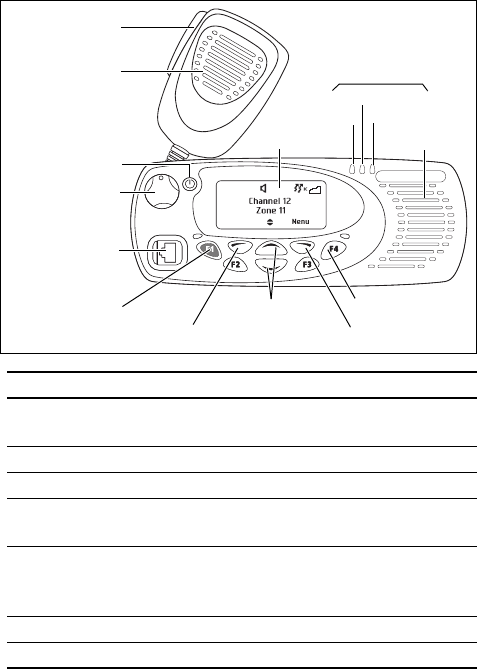
22 Getting started
About the radio controls
The radio controls are the PTT key, volume control,
on / off key, scroll keys, selection keys and function
keys. Some keys have functions assigned to both
short and long key presses:
■a short key press is less than one second, and
■a long key press is more than one second.
The radio controls and their functions are described in
the following sections.
Name Function
PTT key Press and hold to transmit and release to
listen
Volume control Rotate to change the speaker volume
On/off key Turn the radio on or off with a long press
Left and right
selection keys
Action determined by the text above the
selection key
Scroll keys Scroll up and down through a list of menu
options, scroll left and right in messages,
or select the Quick Access menu
Emergency key Activates emergency mode
Function keys Programmed for frequently used options
scroll
keys
on/off key
volume
control
microphone
socket
PTT key
(press-to-talk)
red
display speaker
green
orange
microphone radio status
LEDs
function keys
1 to 4
left selection key right selection key
emergency
key
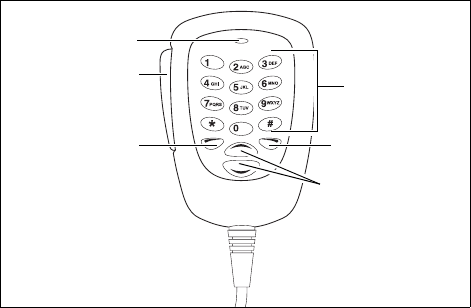
Getting started 23
About the keypad microphone
Your radio may have a keypad microphone installed.
The keypad microphone has a PTT key as well as
alphanumeric keys, two scroll keys, and left and right
selection keys.
The PTT key, the scroll keys and the selection keys all
work in the same way as those on the radio control
head (see "About the radio controls").
PTT key
(press-to-talk)
microphone
left selection
key
scroll keys
alphanumeric
keys
right selection
key
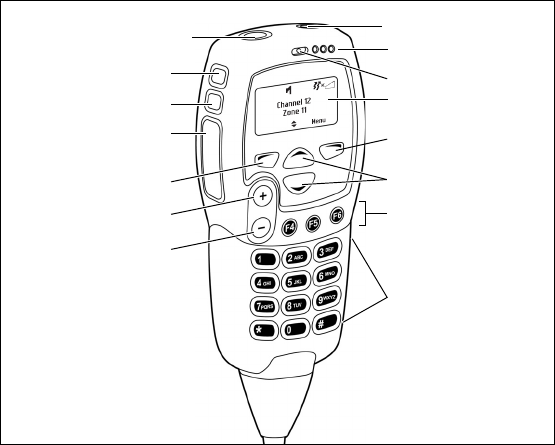
24 Getting started
About the hand-held control head
Your radio may have a hand-held control head installed,
to enable you to operate the radio at a distance from the
radio body.
The keys and controls work in the same way as those
on the standard control head, with the exception of the
PTT and volume up and down keys. The hand-held
control head also has two additional function keys.
scroll keys
function key 3
volume up
PTT key
(press-to-talk)
microphone
status LEDs
alphanumeric
keys
right selection
key
volume down
function key 2
on/off key
function key 1
display
function keys 4
to 6
left selection key
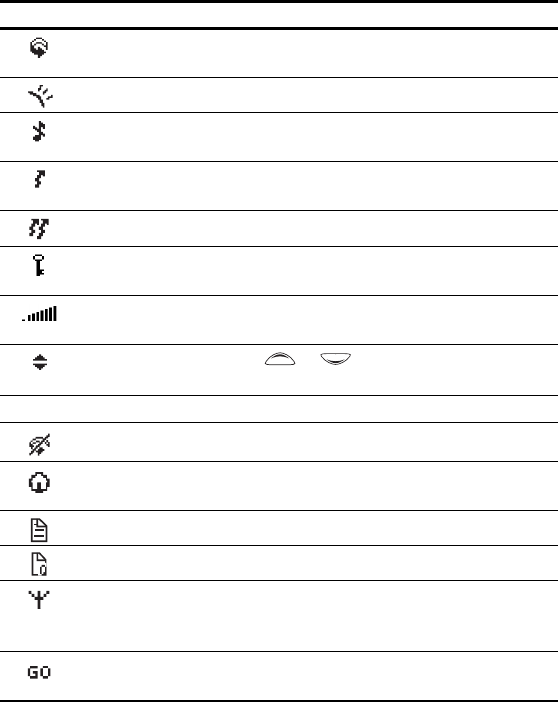
Getting started 25
Understanding the radio display
The messages and icons you see on your radio
display depend on the mode in which your radio is
operating and the way it is programmed.
Radio display icons
These are some of the icons you may see on your
radio display:
Icon Meaning
Scanning: your radio is monitoring a group of channels or
workgroups for activity
External alert: external alert is turned on
Silent operation: your radio’s audible tones have been
turned off
Low-power transmit: your radio is set to transmit on low
power
Transmit: your radio is transmitting
Scrambler: the voice-inversion scrambler is turned on
(analog channels only)
Signal strength indicator: the more bars, the stronger the
signal being received by the radio
Scrolling: you can use or to move through a list, or
access a Quick Reference menu
Trunked mode icons
Scanning: scanning has been turned off
Homegroup: your radio has been returned to the
homegroup using the homegroup toggle function key
Call queuing: call queuing is turned on
Call queuing: there are calls in the call queue
Network: your radio is registered on a trunked network
Flashing: your radio is attempting to register on a trunked
network
Trunking: your radio has established a call and you are now
able to speak to the other party
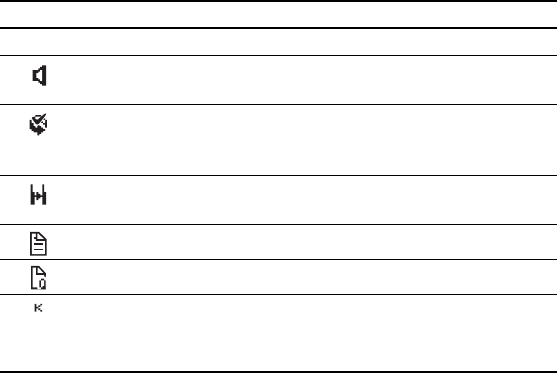
26 Getting started
Conventional mode icons
Monitor or squelch override: monitor or squelch override is
turned on
Scanning: your radio is monitoring a group of channels for
activity, and the currently selected channel is a member of
the scan group.
Repeater talkaround: your radio is operating in repeater
talkaround mode, or you are on a simplex channel
Text message: there is no text message in the call queue
Text message: there is a text message in the call queue
Zone: this letter represents the zone in which your radio is
operating, where A is zone 1, Z is zone 26 (for example, K
represents zone 11)
Icon Meaning
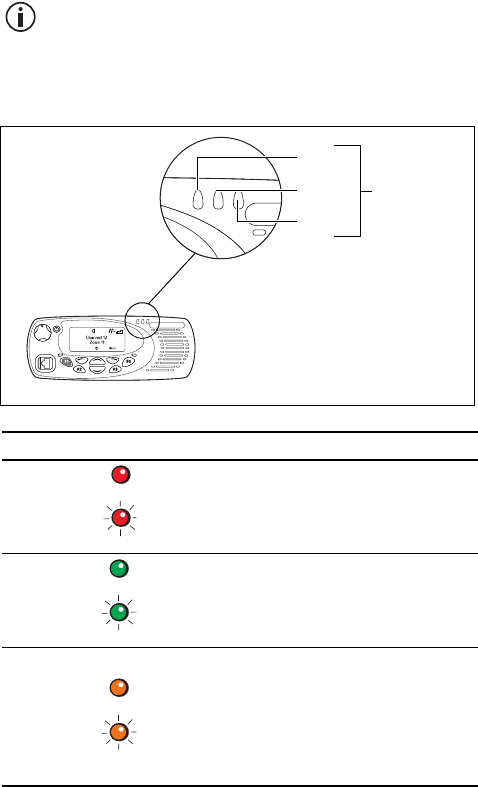
Getting started 27
Understanding the radio
indicators
The status LED indicators and the radio’s audible
tones—together with the radio display—all combine to
give you information about the state of your radio.
The most common way the indicators work is
described in the following sections.
The way these indicators behave may be
affected by the way your radio is programmed.
Status indicators
Color Meaning
Red
(transmit)
On: your radio is transmitting
Flashing: your transmit timer is about to
expire
Green
(receive)
On: the current channel is busy
Flashing: you have received a call or
monitor is active
Orange
(network)
Off: No service
Flashing: Limited service (no inter-site or
fixed network services are available)
On: Full service
For more information see "Checking that
your network is available" on page 38.
red
green
orange
status
LEDs

28 Getting started
Audible tones
The radio uses audible tones to alert you to its status:
■Radio controls and keypress tones—the tones
and beeps you hear when you press your radio’s
keys or use the controls.
■Incoming call tone—when the radio is receiving
a call.
■Warning tones—when there is an error.
Warning If quiet or silent mode is turned on, you will
not hear any alert tones.
Some of the more common audible tones are
described below:
Tone Meaning
One short
beep
■Valid keypress: the action you have
attempted is permitted
■Function activated: a function has
been turned on (using either the Main
menu or a function key)
One long, low-
pitched beep
■Invalid keypress: the action you have
attempted is not permitted
■Transmission inhibited: you have
attempted to transmit, but for some
reason you cannot make a call at
this time
One short,
low-pitched
beep
Function deactivated: a function has been
turned off (using either the Main menu or
a function key)
Two short
beeps
Radio turned on: the radio is powered on
and ready to use
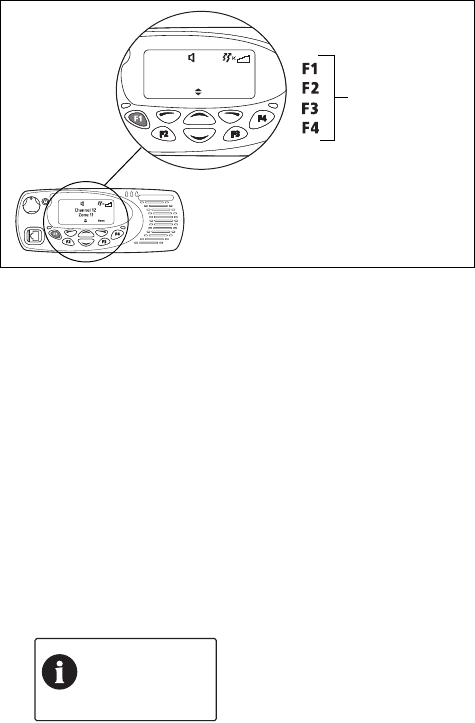
Getting started 29
Using function keys to access
frequently used features
The function keys provide access to some of the
features you use most often. These features are
assigned to the function keys when the radio is
programmed. Some keys may have a feature
associated with both a short key press and a long key
press.
Viewing the function key settings
Use the Main menu to check the features assigned to
your radio’s function keys:
1Press Menu and select Radio settings > Radio
info > Key settings.
2In the Key Settings menu, scroll through the list of
function keys.
3Press Select to view details of the function
associated with a particular function key.
The example shown is for a function key
programmed to turn backlighting on and off.
4Press Back to return to the Key Settings menu.
Zone 11
Channel 12
Talkgr Menu function keys
Backlighting
toggle
OKBack
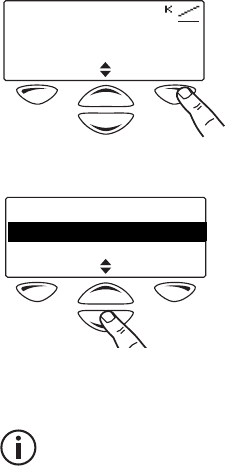
30 Getting started
Navigating the radio’s menus
Your radio has a number of menus, each containing
lists or submenus. The menus available depend on
the way your radio is programmed.
Using the Main menu
To access the Main menu, press the right selection
key whenever Menu appears above it.
Use the scroll keys to move through the menu list.
When the menu you want is highlighted, press Select
to open the menu you have chosen.
To quickly exit the menu system, press and hold
the left selection key when the word Cancel or
Back appears above it.
Channel 12
Zone 11
Menu
SelectBack
Main menu
Zones
Address book
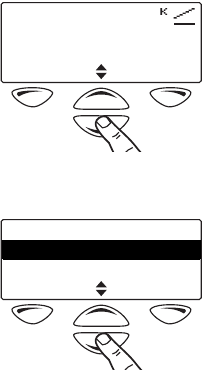
Getting started 31
Accessing frequently used menus
Depending on how your radio is programmed, you
may have two different Quick Access menus. One
Quick Access menu is displayed when you press a
scroll key, and the other when you press the left
selection key. These give you easy access to the
menus you use most often.
Using the scroll key Quick Access menu
There are two ways to use this Quick Access menu:
■Use the scroll keys to scroll through a list of zones
or channels.
■Press the scroll keys and the Quick Access menu
appears.
In this example, the Channels menu is the Quick
Access menu. Use the scroll keys to go directly to
the Channels menu.
The Channels menu, with a list of your available
channels, is now displayed.
Using the left selection key Quick
Access menu
The text above the left selection key corresponds to
the Quick Access menu, for example, Zones.
To use this Quick Access menu:
Menu
Channel 12
Zone 11
Channels
Channel 1
Channel 2
SelectBack
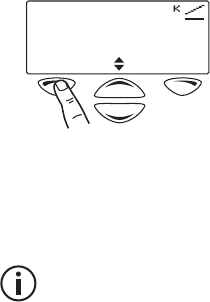
32 Getting started
■Press the left selection key and the associated
menu appears.
Using the alphanumeric keys to
search a list
This feature is only available for radios with
alphanumeric keys.
If a blinking cursor appears when you select a list, you
are able to search for the menu item you want using
the alphanumeric keys. This is of particular benefit if
you have a large number of items in a list.
Lists that you may be able to search are channels,
zones, workgroups, and preset calls.
■To search a list, enter the required name using the
keypad.
Channel 12
Zone 11
MenuZones
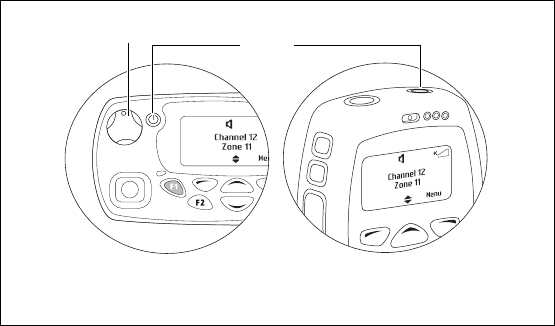
34 Basic operation
Turning the radio on and off
Long press the on/off key to turn the radio either on
or off.
When the radio is first turned on, the red, green, and
orange LEDs flash briefly, and the radio gives two
short beeps. A brief message may appear on the
display.
Security lock on power-up feature
Your radio may be automatically locked each time it is
powered-up. If the message Enter PIN appears on
the display, enter your assigned PIN (personal
identification number). See “Unlocking the radio”
below.
Locking the radio
1Press Menu and select Radio settings >
Functions > Lock radio. (Depending on how your
radio is programmed, you may be able to press a
function key to turn radio lock on and off.)
2Scroll to either On or Off and press Select.
(The current setting is highlighted.)
The radio is now locked, and the message Enter
PIN appears on the display.
volume control on/off
Standard control head Hand-held control head

Basic operation 35
The radio remains locked until the correct
sequence of keys is pressed. If you forget the
unlock sequence or you do not know it, contact
your radio provider for assistance.
Unlocking the radio
■To unlock your radio, use the unlock sequence
you have been given. (This is a pre-programmed
sequence of four keys.)
Adjusting the speaker volume
Standard control head
Rotate the volume control clockwise to increase the
speaker volume and counterclockwise to decrease
the volume. The raised dot indicates the current
volume setting.
Hand-held control head
Press to increase the speaker volume, and to
decrease the volume.
The volume control also changes the volume
level of the radio’s audible indicators.
36 Basic operation
Locking and unlocking the
keypad
The keypad lock feature prevents you from pressing a
key accidentally. The number of keys that are locked
depends on the way your radio is programmed.
If you receive a call while the keypad is locked, press
any key to answer.
To lock the keypad:
■Press and hold the right selection key for about
one second.
The message Keypad locked briefly appears on
the display, and Unlock appears above the right
selection key, in place of Menu.
When any of the locked keys are pressed, the
message Keypad lock active appears.
To unlock the keypad:
■Press and hold the right selection key for about
one second.
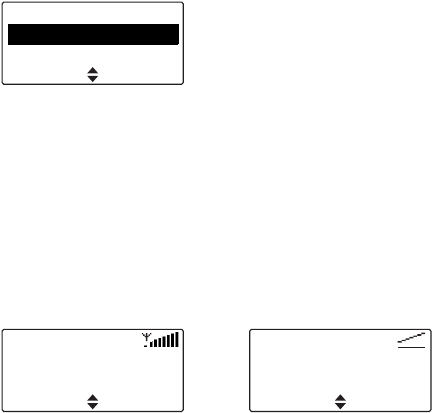
Basic operation 37
Changing the radio’s operating
mode
The way your radio performs basic functions, such as
sending and receiving calls, depends on the operating
mode of your network. The two operating modes that
may be available on your radio are:
■trunked mode (see "Operating in trunked mode"
on page 38), and
■conventional mode (see "Operating in
conventional mode" on page 66).
To change your operating mode:
1Press Menu and select Change mode.
(Depending on how your radio is programmed, you
may be able to press a function key to change
mode.)
2Select Yes to confirm your selection, and your
radio now shows the default display for either
trunked or conventional.
The following examples show typical default
displays for trunked and conventional modes.
SelectBack
Main menu
Change mode
Channels
trunked mode conventional mode
Network 1
200-20001-20
Menu
16A
Channel 1
Zone 2
Menu

38 Operating in trunked mode
4 Operating in trunked
mode
This section explains how your radio operates on a
DMR (digital), MPT (analog) or dual-mode trunked
network.
These features are controlled by software
licenses (SFE) and may not be available with
your radio.
Your radio must have trunking functionality
programmed before it can operate in DMR or
MPT trunked mode.
This section covers:
■Checking that your network is available
■Changing your network
■Making a preset call
■About trunked zones and workgroups
■About emergency operation
■Dialing a PABX number
■Dialing a PSTN number
■Receiving a call
■Re-establishing a call
■Checking missed calls
■About status messages
■About trunked text messages
■Placing the radio in do-not-disturb mode
■Calls to conventional channels or conventional
groups

Operating in trunked mode 39
Checking that your network is
available
Check that the orange LED is glowing and the network
icon appears in the display. These are the
indications that your radio has access to a trunked
network.
If the network icon is flashing and No service appears
on the display, your radio is attempting to access the
trunked network. If this icon remains flashing, your
radio may be out of the network coverage area.
If Limited service appears on the display, one of the
network sites or the connection between the network
sites has been interrupted. You can still make calls to
radios covered by the same site but not to radios to
other sites.
Changing your network
Your radio may be programmed to operate in up to
four completely separate trunking networks, either
DMR (digital), MPT (analog) or both (dual mode).
You may wish to change networks because you are
out of the network coverage area, or you need to have
access to another trunking network.
To change your radio’s operating network, you may
be able to either use the Main menu or dial the new
network using the alphanumeric keys.
Changing your radio’s workgroup may also
change the network in which you are operating.
See "Selecting a workgroup" on page 43.
Using the Main menu
1Press Menu and select Change network.
SelectBack
Main menu
Change network
Change mode
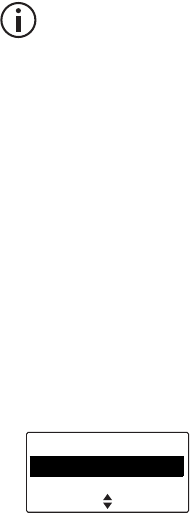
40 Operating in trunked mode
2In the Change Network menu, scroll through the
list of networks until the network you want appears.
3Press Select.
The radio will restart and display the name of the
new network.
Dialing a new network
This feature is only available for radios with
alphanumeric keys.
1Dial *700# to display the name of the current
trunked network.
2Dial *70n# to change to a new network, where n is
the number of the new network (1 to 4).
The radio will restart and display name of the new
network.
Making a preset call
The preset calls programmed for your radio may be to
other radios, to PABX extensions or to PSTN
numbers.
1Press Menu and select Preset calls.
(Depending on how your radio is programmed, you
may be able to use a function key, or left selection
key to select the Preset Calls menu.)
2In the Preset Calls menu, scroll through the list of
calls until the call you want appears, then press
Send.
While the call is being setup, you can cancel the
call by pressing Clear.
SelectBack
Main menu
Preset calls
Set zone

Operating in trunked mode 41
Dialing a preset call
This feature is only available for radios with
alphanumeric keys.
The preset calls programmed for your radio can be
dialed if you know the number associated with the
preset call.
1Dial p, where p is the number of the preset call.
If your preset call number is the same as a call to
another radio, then you need to dial a leading 0.
For example, dial 23# to call radio 23 and dial 023#
for preset call number 23.
2Press Send or the # or PTT key.
While the call is being setup, you can cancel the
call by pressing Clear.
23
SendClear

42 Operating in trunked mode
About trunked zones and
workgroups
Trunked zones and workgroups are used to manage
the calls on the trunked system. Zones typically define
geographic areas (towns, suburbs or counties), or
branches of an organization. Workgroups span
multiple zones, and typically define functions, work
areas or job roles.
When your radio belongs to a workgroup, it is said to
be ‘subscribed’, and you receive all calls directed to
that group of users. A group’s members are dynamic,
in that a group only contains radios that are currently
registered on the system and subscribed to the
same group.
Your radio may be programmed to use different
names for a ‘zone’ and ‘workgroup’. For
example, ‘district’ or ‘area’ may be used in place
of zone, and ‘role’ or ‘group’ may be used in
place of workgroup.
Selecting a zone
1Press Menu and select Set zone.
(Depending on how your radio is programmed, you
may be able to use the scroll keys or left selection
key to select a zone.)
2In the Set Zone menu, scroll through the list of
zones until the zone you want appears.
3Press Select.
4Check that orange LED is glowing and the network
icon appears on the display.
SelectBack
Main menu
Set zone
Set workgroup
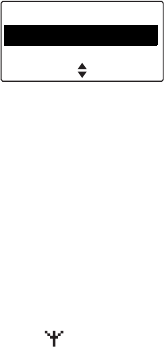
Operating in trunked mode 43
Selecting a workgroup
1Press Menu and select Set workgroup.
(Depending on how your radio is programmed, you
may be able to use the scroll keys or left selection
key to select a workgroup.)
2In the Set Workgroup menu, scroll through the list
of workgroups until the workgroup you want
appears.
3Press Select.
4Check that orange LED is glowing and the network
icon appears on the display.
Making a call to a workgroup
Different types of calls may be associated with your
workgroups. These calls can be individual calls,
preset calls, broadcast calls (no response permitted),
or conference calls.
To make a call to a workgroup:
1Select the required zone. See "Selecting a zone"
on page 42.
2Select the required workgroup. See "Selecting a
workgroup" on page 43.
3Press the PTT key, and a call to that workgroup is
made.
Selecting the homegroup
Your ‘homegroup’ is the workgroup in which your
radio usually operates. To return to your homegroup
at any time, you may be able to use the main menu, or
use a function key.
SelectBack
Main menu
Set workgroup
Go to homegroup
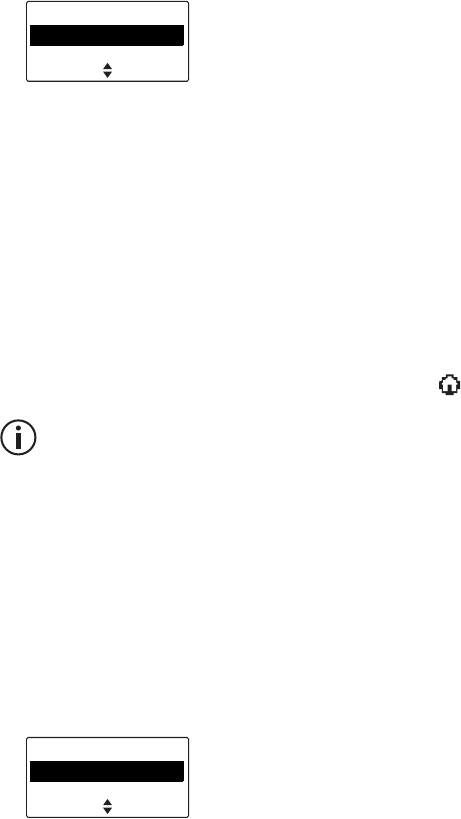
44 Operating in trunked mode
Using the Main menu
1Press Menu and select Go to homegroup.
2Press Select, and the radio now shows your
homegroup in the default display.
Using a function key
You may be able to use a function key to toggle
between your homegroup, and the currently
selected zone and workgroup.
■Press the function key programmed for your
homegroup.
The radio now shows your homegroup in the
default display, along with the homegroup icon .
The homegroup icon only appears if you use a
function key to select your homegroup.
Scanning workgroups
The ‘My Workgroups’ list comprises the current
workgroup, the homegroup, and other programmed
groups. When scanning is active, the radio will receive
activity from any subscribed groups in the My
Workgroups list.
To activate scanning:
1Press Menu and select Scanning.
(Depending on how your radio is programmed, you
may be able to use a function key to select
scanning.)
2Scroll to On (or Off) and press Select.
SelectBack
Main menu
Go to homegroup
Scanning
SelectBack
Main menu
Scanning
Send
Operating in trunked mode 45
About emergency operation
In an emergency you may be able to summon help by
sending an emergency call. After making the call, your
radio may be programmed to enter emergency mode.
While emergency mode is active, your radio may
cycle between receive and transmit, so that your
dispatcher or the called party can hear any activity
near your radio.
On most networks, an emergency call takes
precedence over other call types, and existing calls
are cleared down so that the emergency call can
proceed.
To make an emergency call from your radio, you may
be able to either:
■make a preset emergency call,
■dial the emergency call using the alphanumeric
keys, or
■use a function key programmed for emergency
mode.
Making a preset emergency call
To make a preset emergency call from your radio, you
may be able to either use a programmed function key,
use the main menu, or use your quick access menu.
1Select your preset emergency call.
See "Making a preset call" on page 40.
2Press Send.
An emergency call is now sent to the emergency
location that has been programmed for your radio.

46 Operating in trunked mode
Dialing an emergency call
This feature is only available for radios with
alphanumeric keys.
1Dial *9.
2Press Send or the or PTT key.
An emergency call is now sent to the emergency
location that has been programmed for your radio.
If you wish to send an emergency call to
another radio, you may be able to dial *9*n then
press the or PTT key. In this case, n is the
radio unit number you wish to send the
emergency call to and may be a two- or three-
digit number.
Activating emergency mode
You can activate emergency mode using a function
key programmed for emergency mode. Alternatively,
you may be able to activate emergency mode using a
hidden switch or panic button. Once emergency mode
is activated, your radio makes an emergency call to
your dispatcher or some other predetermined
location. The radio then enters emergency mode.
While emergency mode is active, your radio may
cycle between receive and transmit, so that your
dispatcher can hear any activity near the radio.
Cancelling emergency mode
Reset the radio to normal operation at any time by
turning the radio off and then on.
Emergency mode may be programmed to end
after a fixed period of time. In this case, there is
no need to turn the radio off and then on in order
to return the radio to normal operation.

Operating in trunked mode 47
Dialing a PABX number
This feature is only available for radios with
alphanumeric keys.
To dial a PABX extension:
1Dial n, where n is the PABX extension you wish
to call.
2Press Send or the or PTT key.
The call details appear on the display. While the
call is being setup, you can cancel the call by
pressing Clear.
Dialing a PSTN number
This feature is only available for radios with
alphanumeric keys.
To dial a PSTN number:
1Dial 0n, where n is the PSTN number you wish to
call.
The numbers you dial before the 0 depend on
the way your network operates.
2Press Send or the or PTT key.
The call details appear on the display. While the
call is being setup, you can cancel the call by
pressing Clear.

48 Operating in trunked mode
Receiving a call
When you receive a call, your radio displays the
caller’s identity and responds in one of two ways,
depending on the way it was programmed and the
way your network operates.
■On-air call setup: The radio gives a ring and
automatically accepts the call. The icon
appears in the display.
■Full off-air call setup (FOACSU): When a call is
received, the radio rings like a telephone.
To accept the call, press Answer. The radio gives
a beep and the icon appears in the display. You
may also be able to accept the call if you briefly
press the PTT key or lift the microphone off the
microphone clip.
Once the icon appears, you can proceed with the
call, as follows:
1Hold the microphone about 5 cm (2 inches) from
your mouth.
2Press and hold the PTT key to transmit.
3Speak clearly into the microphone and release the
PTT key when you have finished talking.
While you are transmitting, the red LED glows and
appears in the display.
4End the call by placing your microphone back onto
its hook or by pressing Clear. The network may
also end the call if neither you nor the other party
transmits for a predetermined time or if your call
time limit is exceeded.
Call time limit
In trunked mode, the length of your call may be limited
by the network or by your radio. Your radio may be
programmed to display the time remaining for
your call.
Operating in trunked mode 49
Re-establishing a call
The last number recall, unanswered call and callback
functions allow you to re-establish calls using the
PTT key.
Last number recall
When an outgoing call has ended, the message
Last call to and the called unit’s identity may appear
on the display.
To make a call to that person again, briefly press the
PTT key.
Unanswered call
When an incoming call is missed, the message
Missed call and the caller’s identity may appear in
the display.
To return the call, briefly press the PTT key.
Callback
When an incoming call has been ended, the message
Last call from and the caller’s identity may appear in
the display.
To make a call to that person, briefly press the PTT
key.
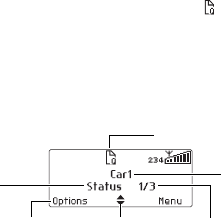
50 Operating in trunked mode
Checking missed calls
If you have missed an incoming call, it may be stored
in the call queue, so that you can return the call later.
Information about the last missed call is shown on the
display and the queued call icon appears.
In the example below, the last call received was a
status message from Car 1. This call is the first of
three calls stored in the call queue.
Accessing the call queue
1Use the scroll keys to move through the calls in the
call queue until the call you want appears.
2Press Options to open the call options menu.
The options available for the call depend on the
type of call it is. If the call is a voice call, select Call
to return the call or Delete to delete the call.
If the call is a status message or a text message,
then select View to read the message.
identity of last
unanswered caller
scroll through
the calls
type of call
position of call
in the call queue
options available
depend on type of
call
queued calls

Operating in trunked mode 51
Changing your call queuing setting
Your radio may be programmed so that you are able
to change call queuing to ‘unanswered’. Unanswered
call queuing means that all status and text messages
are immediately queued. Incoming voice calls are only
queued if they are unanswered.
If your radio has alphanumeric keys, you may be able
to change your call queuing setting using the keypad.
To activate call queuing:
■press Menu and select Radio settings > Call
settings > Call queuing and choose On,
■press the function key programmed for Call
queuing, or
■dial *48 then press the or PTT key.
The message Call queuing activated appears.
To change call queuing to unanswered call queuing:
■press Menu and select Radio settings > Call
settings > Call queuing and choose Off,
■press the function key programmed for Call
queuing, or
■dial #48 then press the or PTT key.
The message Call queuing deactivated appears.
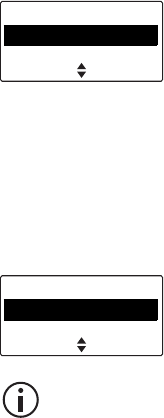
52 Operating in trunked mode
About status messages
A status message is sent to another party to indicate
your current activity or location, such as “en route” or
“at lunch”. If the radio receiving your message has
been programmed with the same status messages, it
will decode and display your message. If you receive
a status message, the message is automatically
queued, since a response is not expected.
Selecting a status message
1Press Menu and select Send > Status.
2In the Status menu, scroll through the list of status
messages until the message you want appears.
Sending a status message
1When you have chosen a message, press
Options and the Send To menu opens.
2In the Send To menu, scroll through the list of
options until the choice you want appears.
If your radio has alphanumeric keys, you can
choose the option Dialed, then dial the
number of the party you wish to call.
3Press Send.
The call details appear on the display. While the
call is being setup, you can cancel the call by
pressing Clear.
OptionsBack
Status
On site
In transit
SelectBack
Send to
Dispatcher
Preset
Operating in trunked mode 53
Dialing a status message
If your radio has alphanumeric keys, the status
messages programmed for your radio can be dialed.
To dial the message, you need to know the number
associated with the status message.
To dial a status message:
1Dial *0s*n, where s is the number of the status
message and n is the radio unit number you wish
to send the message to.
2Alternatively, dial *0s*p, where p is the number of
a preset call. See "Dialing a preset call" on page 41
for more information.
3Press Send or the # or PTT key.
The call details appear on the display. While the
call is being setup, you can cancel the call by
pressing Clear.
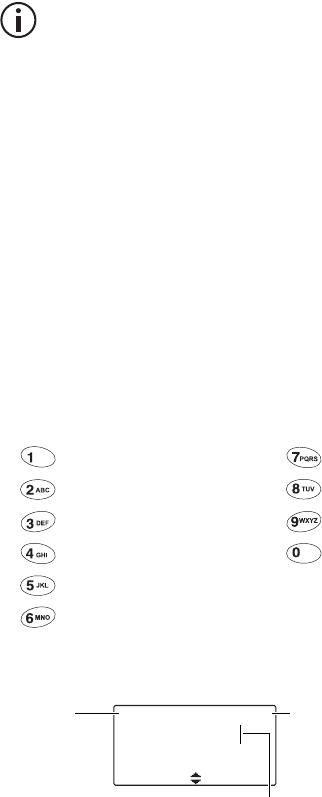
54 Operating in trunked mode
About trunked text messages
Your radio may be programmed so that you can send
text messages. The three options for creating text
messages are selecting a preset text message,
editing a draft text message, or creating a new text
message.
To either edit or enter a text message, your
radio must have alphanumeric keys.
Using the alphanumeric keys to enter text
When the alphanumeric keys are used to enter a text
message, they have special functions.
■Use the # key to select the type of text entry:
upper and lower case characters (ABC, abc),
initial capitals (Abc), or numbers (123).
■Use the left selection key (Clear) to delete a
character from the display.
■Use the scroll keys to move through a message.
Repeated presses of these keys will give you the
characters shown in the following table.
In the example below, a preset text message has
been selected, and is being edited.
Key Characters Key Characters
.,?!-/1 PQRS7
ABC2 T UV8
DEF3 WX Y Z 9
GHI 4 space 0
JKL5
MNO6
Options
Contact base now|
C lea r
abc 16/100
currently
selected text
entry option
(lower case)
number of characters
used/total number of
characters allowed
cursor: shows current point of text entry

Operating in trunked mode 55
Sending a preset text message
1Press Menu and select Send > Text message >
Preset message.
In the Preset Message menu, a short label
representing each message is displayed.
2Scroll through the list of preset message labels
until the one you want appears.
3Press Select, and the text message you have
chosen is now displayed.
4Press Send to send the message, or Edit to
change the message.
Editing a draft text message
1Press Menu and select Send > Text message >
Edit message.
In the Edit Message menu, a short label
representing a message is displayed.
2Use the scroll keys to move through the
characters. Use the alphanumeric keys to add
characters and the Clear key to delete them.
SelectBack
Text message
Preset message
Edit message
SelectBack
Preset message
Contact
Site
Send
Contact base now
Back Edit
Options
On site|
Clear
abc 7/100

56 Operating in trunked mode
3When the message is complete, press Options
and select Send.
Creating a new text message
1Press Menu and select Send > Text message >
New message.
The last text message you sent may be displayed.
2In the New Message menu, modify the last text
message you sent, or enter the new text message
using the alphanumeric keys.
3When the message is complete, press Options
and select Send.
Sending a text message
1When you have chosen or entered a message,
press Options and the Text Options menu opens.
2In the Text Options menu, scroll through the list of
options until the choice you want appears.
(If your radio has alphanumeric keys, you may be
able to dial the number of the party you wish
to call.)
3Press Select.
The call details appear on the display. While the
call is being setup, you can cancel the call by
pressing Clear.
SelectBack
Text options
Send
Cancel sending

Operating in trunked mode 57
Placing the radio in
do-not-disturb mode
If you do not want calls for a while, you can place the
radio in do-not-disturb mode, so that incoming calls
can be ignored. You can make outgoing calls in the
usual way.
While do-not-disturb mode is active, incoming
calls cannot be stored in the call queue.
Using a function key
1Press the function key programmed for do not
disturb, to activate the do-not-disturb function.
The message Do not disturb activated appears
on the display. Your radio will now ignore all
incoming calls.
2To deactivate the do-not-disturb function, press
the do-not-disturb function key again.
The message Do not disturb deactivated
appears on the display.
Using the Main menu
1Press Menu and select Radio Settings >
Call Settings > Do not disturb.
2In the Do Not Disturb menu, choose On.
3Press Select.
The message Do not disturb activated appears
on the display. Your radio will now ignore all
incoming calls.

58 Operating in trunked mode
Calls to conventional channels
or conventional groups
You may be able to dial conventional channels or
groups, using 101 to 110. The channels or groups
called using these numbers are programmed for your
radio.
To call a conventional channel or group:
1Dial the number for the channel or group you wish
to call.
2Press Send or the or PTT key.
Your radio switches to the conventional channel
programmed for that number.
Dialing calls in trunked mode 59
5 Dialing calls in trunked
mode
If your radio has alphanumeric keys, you can make
dialed calls from your radio. The numbers you dial and
dialing features available depend on the way your
radio is programmed and the way your network
operates. Contact your radio provider for further
assistance.
This section covers:
■MPT 1343 dialing
■Nokia ANN fleet calls
■Accessing common trunking functions

60 Dialing calls in trunked mode
MPT 1343 dialing
If your MPT or DMR trunked network uses the MPT
1343 dialing scheme, your radio’s unique number on
the network consists of:
■a three-digit prefix,
■a four-digit fleet number, and
■a two- or three-digit radio unit number.
You may also be part of a group, with a two- or three-
digit group number.
Finding your radio’s MPT number
To find your radio’s full MPT number:
1Dial *700.
2Press the # or PTT key.
The name associated with your network and your
radio’s full MPT number appears.
The number is in the form:
Radio unit number
234
Prefix
300
Fleet
3078
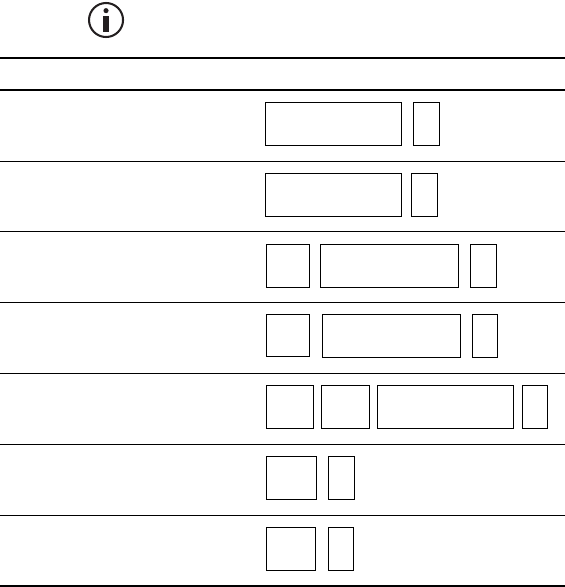
Dialing calls in trunked mode 61
MPT 1343 dialed calls
The following table summarizes the way you dial calls
to other radios and groups of radios and gives an
example of each type of call.
In the following examples, the final # may be
replaced by a short press of the PTT key.
Call to Dialing code and example
Radio 23 in the same fleet
as you
Radio 234 in the same fleet
as you
Radio 23 in fleet 3078 with the
same prefix as you
Radio 234 in fleet 3078 with
the same prefix as you
Radio 234 in fleet 3078 with a
different prefix to you (300)
Group 92 in the same fleet
as you
Group 923 in the same fleet
as you
Radio unit number
23 #
Radio unit number
234 #
Fleet
3078
Radio unit number
23 #
Fleet
3078 #
Radio unit number
234
Prefix
300
Radio unit number
234 #
Fleet
3078
Group
92 #
Group
923 #

62 Dialing calls in trunked mode
Nokia ANN fleet calls
If your trunked network uses Nokia ANN dialing, the
numbers you dial depend on your fleet size. Fleets are
defined as either large, small or mini. Your radio’s
unique number on the network consists of:
■a lead number 7, 8 or 9, depending on the fleet
size,
■a zero-, one-, two- or three-digit prefix,
■a one- or two-digit fleet number, and
■a two- or three-digit radio unit number.
See your radio provider or network administrator for
Nokia ANN call details.
Finding your radio’s Nokia ANN number
To find your radio’s full Nokia ANN number:
1Dial *700.
2Press the # or PTT key.
The name associated with your network and your
radio’s full Nokia ANN number appears.
The number is in the form:
Radio unit number
209
Prefix
34
Fleet
2
Lead
7
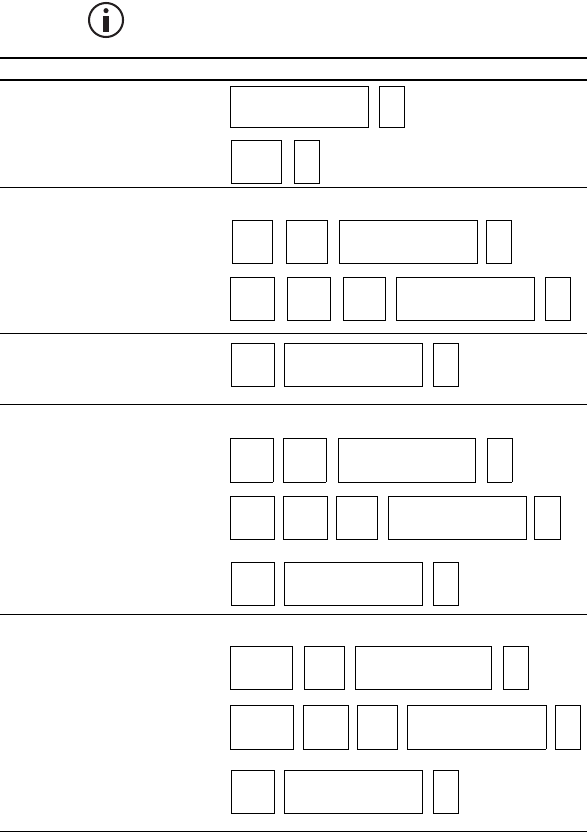
Dialing calls in trunked mode 63
Nokia ANN dialed calls
The following table summarizes the way you dial calls
to other radios and gives an example of each type of
call.
In the following examples, the final # may be
replaced by a short press of the PTT key.
Call to Dialing code and example
Radio 23 in the same fleet
as you
Group 923 in the same
fleet as you
Large fleet:
Call to radio 234 in fleet 1
with the same prefix as you
Call to radio 235 in fleet 2
with a different prefix to
you (32)
Call to radio 236 in fleet 2
with the same lead and
prefix1
Small fleet:
Call to radio 23 in fleet 51
with the same prefix as you
Call to radio 24 in fleet 52
with a different prefix to
you (126)
Call to radio 25 in fleet 53
with the same lead and
prefix1
Mini fleet:
Call to radio 23 in fleet 80
with the same prefix as you
Call to radio 24 in fleet 81
with a different prefix to
you (3)
Call to radio 25 in fleet 81
with the same lead and
prefix1
1. If 4-digit-dialing is configured in the programming application.
Radio unit number
23 #
Group
923 #
#
Radio unit number
234
Fleet
1
Lead
7
Lead
7#
Radio unit number
235
Prefix
32
Fleet
2
#
Radio unit number
236
Fleet
2
Lead
7#
Radio unit number
23
Fleet
51
Lead
7#
Radio unit number
24
Prefix
126
Fleet
52
#
Radio unit number
25
Fleet
53
Lead
7, 8 or 9 #
Radio unit number
23
Fleet
80
Lead
7, 8 or 9 #
Radio unit number
24
Prefix
3
Fleet
81
#
Radio unit number
25
Fleet
81
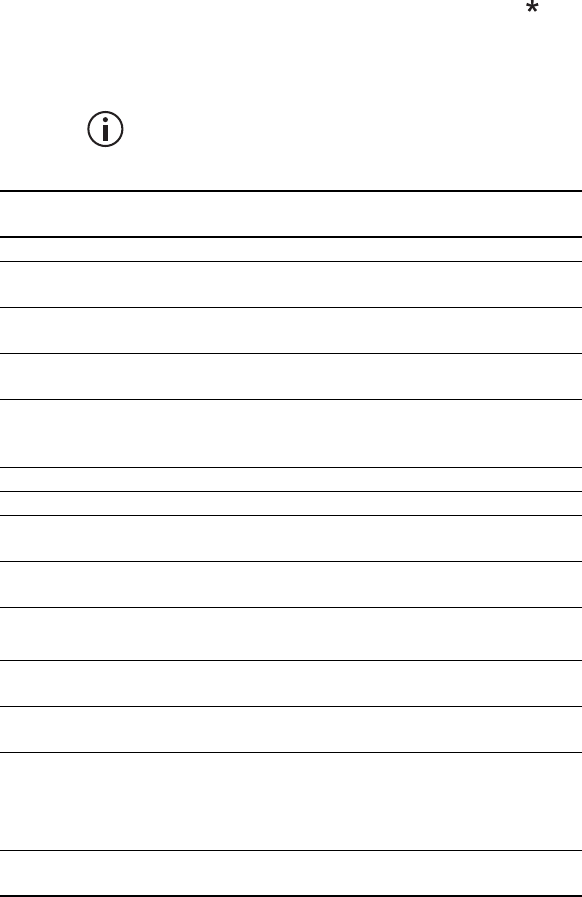
64 Dialing calls in trunked mode
Accessing common trunking
functions
The following tables explain how you can access
special MPT or DMR trunking functions using the
and # keys. The availability of these functions is
dependant on the way your radio is programmed and
the way your network operates.
In the following examples, the final # may be
replaced by a short press of the PTT key.
*... # functions
Dialing
code Functions Example
#Accept an incoming FOACSU call
*# Clear call or displayed item, or decline an incoming
FOACSU call
*0#
#0#
Request base dispatcher to call you back
Cancel request
*0*n#
#0*n#
Request another dispatcher to call you back
Cancel request
*0*234#
#0*234#
*0s*n#
*0s#
Status call to radio n (s = status 0 to 31,
MPT, or 0 to 127, DMR)
Status call to dispatcher
*015*23#
*015#
g# Conference call to group g92#
*11*g# Broadcast call to group g *11*92#
*41*n#
#41#
Divert own calls to radio n
Cancel divert
*41*23#
*41*0n#
#41#
Divert own calls to PSTN n
Cancel divert
*41*03456798#
*44*n*m# 1Divert 3rd party calls n to m *44*23*21#
44*n# 1Cancel divert of 3rd party calls #44*23#
*441*m#
#441#
Divert of speech calls to m
Cancel divert of speech calls
*441*21#
#441#
*442*m#
#442#
Divert of packet data calls to m
Cancel divert of packet data calls
*441*21#
#441#
*451# Cancel incoming call diversions (speech only)
*452# Cancel incoming call diversions (packet data only)
*453# 2Cancel incoming call diversions (SDM only)
*454# 2Cancel incoming call diversions (status only)
*48#
#48#
Queue incoming calls
Cancel queue
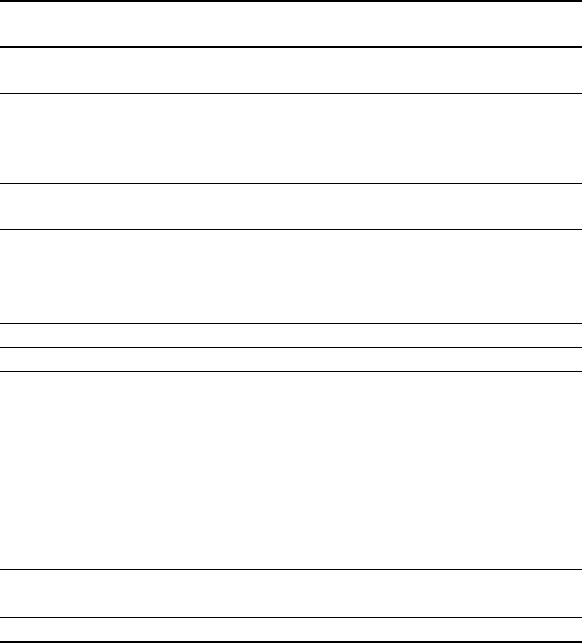
Dialing calls in trunked mode 65
*49#
#49#
Do not disturb
Cancel do not disturb
*491#
#491#
DMR: Do not disturb (SDM calls)
MPT: Do not disturb ( voice calls only)
DMR: Cancel do not disturb (SDM calls)
MPT: Cancel do not disturb ( voice calls only)
*492#
#492#
Do not disturb — data calls only
Cancel do not disturb — data calls only
*50*n# Select channel n (site-select diagnostic function, enabled
during programming)
#50# Resume normal channel hunting (site-select diagnostic
function, enabled during programming)
*700# Display the current network and your full radio number
*70n# Change to network n (1 to 4) *702#
*8*n# 3Priority call (highest) to radio n*8*23#
*8*g# 3Priority conference call (highest) to group g *8*923#
*81*n# 3Priority call (highest) to radio n *81*23#
*81*g# 3Priority conference call (highest) to group g *81*923#
*82*n# 3Priority call (high) to radio n *82*23#
*82*g# 3Priority conference call (high) to group g *82*923#
*83*n# 3Priority call (medium) to radio n *83*23#
*83*g# 3Priority conference call (medium) to group g *83*923#
*9*n# Emergency call to radio n*9*23#
*9*g# Emergency conference call to group g *9*923#
**n# Abbreviated dialed codes (1-49) (MPT only) **3#
1. MPT only.
2. DMR only.
3. DMR has three priority levels and MPT has one priority level.
*8 and *81 are interchangeable. Dialing *82 or *83 in MPT mode has the same
effect as dialing *8 or *81.
*... # functions
Dialing
code Functions Example
66 Operating in conventional mode
6Operating in
conventional mode
This section explains how to operate your radio on a
conventional network. This includes how to make and
receive different types of calls, use your radio in
different repeater areas, and scan a group of channels
for activity.
This section covers:
■Selecting a zone
■Selecting a channel
■Selecting a group
■Checking that a channel is clear
■Making a call
■Making a call using the address book
■Making a local call
■Connecting to a telephone network
■Making an emergency call
■Sending a status message
■Transmitting at low power
■Ending active calls
■Activating the repeater before a call
■Communicating directly with other radios
■Receiving a call
■Hearing faint and noisy signals
■Using the radio in different repeater areas
■Scanning a group of channels

Operating in conventional mode 67
Selecting a zone
A zone is a collection of channels and groups. When
you select a zone, only the channels and groups
assigned to that zone are available.
1Press Menu and select Zones.
(Depending on how your radio is programmed, you
may be able to use the scroll keys or left selection
key to select the Zones menu.)
2In the Zones menu, scroll through the list of zones
until the one you want appears.
3Press Select, and the zone indication appears
either below the channel information, beside the
RSSI icon, or in both positions.
SelectBack
Main menu
Zones
Address book
SelectBack
Zones
Zone 2
Zone 3
Channel 12
Zone 11
MenuZones

68 Operating in conventional mode
Selecting a channel
1Press Menu and select Channels.
(Depending on how your radio is programmed, you
may be able to use the scroll keys or left selection
key to select the Channels menu.)
2In the Channels menu, scroll through the list of
channels until the channel you want appears.
3Press Select, and the programmed channel is now
shown on the display.
Dialing a channel
This feature is only available for radios with
alphanumeric keys.
1Dial the number associated with the channel using
the alphanumeric keys.
2Press Select, and the programmed channel is now
shown on the display.
SelectBack
Main menu
Channels
Zones
SelectBack
Channels
Channel 9
Scan 1
9
SelectClear
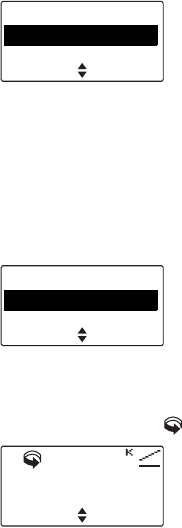
Operating in conventional mode 69
Selecting a group
A group is a collection of channels that are grouped
together for either scanning or voting. In the Channels
menu, the group is shown as being a single channel
item, e.g. “Scan1”.
The sections "Using the radio in different repeater
areas" on page 83 and "Scanning a group of
channels" on page 84 explain how your radio
operates once a scan group or voting group has been
selected.
Using the Main menu
1Press Menu and select Channels.
(Depending on how your radio is programmed, you
may be able to use a function key, the scroll keys
or left selection key to select a group.)
2In the Channels menu, scroll through the list of
channels and groups until the group you want
appears.
3Press Select, and the programmed group is now
shown on the display. The orange LED glows and
the scanning icon appears on the display.
SelectBack
Main menu
Channels
Zones
SelectBack
Channels
Channel 9
Scan 1
Scan 1
MenuChannels

70 Operating in conventional mode
Dialing a group
This feature is only available for radios with
alphanumeric keys.
To dial the group number from the default display:
1Dial the number associated with the group using
the alphanumeric keys.
2Press Select, and the programmed group is now
shown on the display. The orange LED glows and
the scanning icon appears on the display.
Checking that a channel is clear
Monitor allows you to override some or all of the
radio’s mutes, and hear if there is any traffic on a
channel. For analog channels, this is so that you can
check that the channel is clear before you make a call.
Your radio may be programmed to activate
monitor whenever the microphone is off the
microphone clip.
Turning monitor on and off
1Press Menu and select Radio settings >
Functions > Monitor.
(Depending on how your radio is programmed, you
may be able to press a function key to toggle
monitor on and off.)
2Scroll to On (or Off) and press Select.
While monitor is on, the green LED flashes slowly
and the monitor icon appears in the display.
Your radio may be programmed so that monitor
turns off automatically after a short time.
12
SelectClear

Operating in conventional mode 71
Making a call
1Select the required channel or scan group.
You may need to select the zone you want first,
then select the channel or group from that zone.
2Check that the channel is clear. If the green LED is
glowing, the channel is busy and you may not be
able to transmit.
3Once the channel is clear (the green LED is off), lift
the microphone off the microphone clip.
4Hold the microphone about 5 cm (2 inches) from
your mouth.
5Press and hold the PTT key to transmit.
6Speak clearly into the microphone and release the
PTT key when you have finished talking.
While you are transmitting, the red LED glows and
the transmit icon appears on the display.
Limiting call time
Your radio may limit the amount of time you can talk
(transmit) continuously. This is known as the ‘transmit
timer’ or ‘time-out timer’ and allows other radio users
to make calls on that channel.
The radio warns you before the transmit timer expires
by beeping three times. The red status LED flashes
and the message Transmit timeout imminent
appears in the display.
If the transmit timer has timed out, you must release
the PTT before you can transmit again.
Your radio may be unable to transmit for a short
time after the transmit timer has expired.
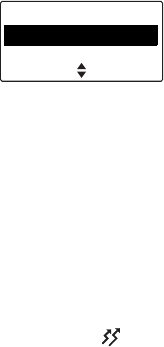
72 Operating in conventional mode
Making a call using the
address book
The Address Book menu has a programmed list of
calls, which can be made from any channel or zone.
Address-book calls may also be used to send status
information, such as “at lunch” or “on site”, or to
change to a channel or group.
Using the Main menu
1Press Menu and select Address book.
(Depending on how your radio is programmed, you
may be able to use the scroll keys, left selection
key or a function key to select the Address Book
menu.)
2In the Address Book menu, scroll through the list of
calls until the call you want appears.
3Press Send.
The call details appear on the display, the red LED
glows, and appears on the display.
SelectBack
Main menu
Address book
Local calls

Operating in conventional mode 73
Making a local call
Each channel on your radio may have one or more
local calls programmed.
Using the Main menu
1Select the required channel.
2Press Menu and select Local calls.
3In the Local Calls menu, scroll through the list of
local calls until the call you want appears.
4Press Send.
The call details appear on the display, the red LED
glows, and appears on the display.
Using the Quick Access menu
1Select the required channel.
2Press one of the scroll keys or the left selection key
to open the Local Calls menu.
3Scroll through the list of local calls until the call you
want appears.
4Press Send.
The call details appear on the display, the red LED
glows, and appears on the display.
Dialing a local call
This feature is only available for radios with
alphanumeric keys.
To make a local call to another radio or group of
radios:
1Select the required channel.
2Press Menu and select Dial radio call.
SelectBack
Main menu
Local calls
Set status
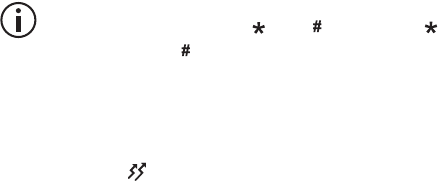
74 Operating in conventional mode
Alternatively, your radio may be programmed so a
local call can be dialed directly from the default
display. In this case, you can start dialing the call
without selecting the menu option.
A series of X and S characters may appear,
prompting you to dial over them.
3Dial the number using the alphanumeric keys.
Your radio may be programmed so you can dial
group tones using the and keys. Dial to
fill one X. Dial to fill the current X and all
subsequent X characters in the current burst.
4Press Send (if the Send option appears).
The call details appear on the display, the red LED
glows, and appears on the display.
When the called party receives your call, the
message Ack received may appear on the
display.
Connecting to a telephone
network
You may be able to use your radio to connect to a
telephone network. This type of call is known as a
DTMF patch call.
To make a DTMF patch call, you may be able to
either:
■use a programmed function key,
■use the Main menu to dial the call,
■make a local call (see "Making a local call" on
page 73), or
■use your address book (see "Making a call using
the address book" on page 72).

Operating in conventional mode 75
Using a function key
Depending on how DTMF patch calls are
programmed, some or the following steps may
not be necessary.
1Select the required channel.
2Press the function key programmed for DTMF
patch call.
Your radio may send tones to capture the line.
3Press Send, or press the function key a second
time, to send the preset number.
You may hear telephone dialing and ringing tones.
4Proceed with your call.
5Press End, or give a long press on the function
key, to end the call.
Your radio may send tones to release the line.
Using the Main menu
This feature is only available for radios with
alphanumeric keys.
To dial a DTMF patch call by using the Main menu:
Depending on how DTMF patch calls are
programmed, some or the following steps may
not be necessary.
1Select the required channel.
2Press Menu and select Dial patch call.
3Dial the required number using the alphanumeric
keys.
4Press Send.
Your radio may send tones to capture the line.
5Press Send to send the number dialed in step 3.
You may hear telephone dialing and ringing tones.
6Proceed with your call.

76 Operating in conventional mode
7Once the call has finished, press End.
Your radio may send tones to release the line.
Making an emergency call
You may be able to activate emergency mode by
using a programmed function key.
1Press the function key programmed for
Emergency Mode and an emergency call is sent to
your dispatcher, or some other predetermined
location.
While emergency mode is active, your radio may
cycle between receive and transmit, so that your
dispatcher can hear any activity near the radio.
Alternatively, your radio may appear to turn off but
will actually remain in emergency mode.
2Reset the radio to normal operation at any time by
turning the radio off and then on.
Emergency mode may be programmed to end
after a fixed period of time. In this case, there is
no need to turn the radio off and then on in order
to return the radio to normal operation.
Sending a status message
Your radio may be able to maintain a record of your
current status. This status may be sent with outgoing
calls programmed to contain status information. If the
radio receiving your message has been programmed
with the same status messages, it will decode and
display your message. The message indicates your
current activity or location, such as “en route” or “at
lunch”.
To change you current status:
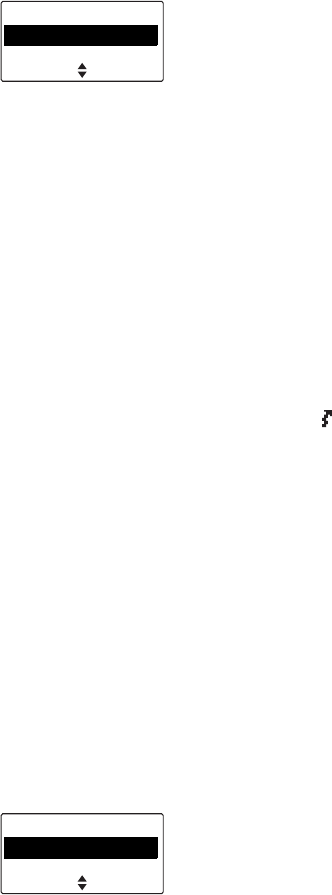
Operating in conventional mode 77
1Press Menu and select Set status.
2In the Set Status menu, scroll through the list of
status messages until the message you
want appears.
3Press Select. The message Status updated
appears on the display.
Transmitting at low power
If you are using your radio in conditions where signal
strength is high, you can reduce the drain on your
vehicle battery by transmitting at low power.
When low power transmit is turned on, appears in
the display and calls are made at low power rather
than at the programmed power setting.
Some channels may always transmit at low power.
To turn low power transmit on or off for all channels:
Using the Main Menu
1Press Menu and select Radio settings >
Functions > Low power tx.
(Depending on how your radio is programmed, you
may be able to press a function key to turn low
power transmit on or off.)
2Scroll to On (or Off) and press Select. (The current
setting is highlighted.)
The message Low power tx activated
(or deactivated) appears in the display.
SelectBack
Main menu
Set status
Dial radio call
SelectBack
Low power tx
Off
On

78 Operating in conventional mode
Using a function key
1Press the function key programmed for low-power
transmit to transmit at low power on your current
channel.
The message Low power tx activated appears
briefly, and the low-power transmit icon appears
on the display.
2Press the low-power transmit function key again to
turn low-power transmit off, and the message Low
power tx deactivated appears on the display.
Ending active calls
You may have a function key programmed to either
end the current call, or end the current call and all
other active calls in your group. This can be done
either by:
■using the function key programmed for reset
monitor to end your current call,
■using the function key programmed for call
cleardown to end your current call and all other
calls in your group, or
■using the function key programmed for both reset
monitor and call cleardown.
Using a function key to end your current call
■Press the function key programmed for reset
monitor. The radio’s monitor is turned off, ending
your current call.
The green LED stops flashing, and the monitor
icon disappears from the display.
Using a function key to end all active calls
■Press the function key programmed for call
cleardown and monitor is turned off for all radios
in your radio group.

Operating in conventional mode 79
The green LED stops flashing, and the monitor
icon disappears from the display.
Using the function key programmed for reset
monitor/call cleardown to end active calls
The function key programmed for reset monitor may
be programmed so that a short key press ends your
current call, and a long key press ends all active calls
in your group.
Activating the repeater before
a call
A repeater-access tone is sent to activate the repeater
before a call is made, so that the start of the call is not
lost.
To send a repeater-access tone, you may be able to
either use the PTT key, or use a programmed
function key.
Using the PTT key
1Press the PTT key and the repeater-access tone
for the current channel is sent.
The call details appear on the display, the red LED
glows, and appears on the display. You may
also hear signaling tones.
2Press and hold the PTT and proceed with your call.
Using a function key
1Press the function key programmed for sending a
repeater-access tone, and the repeater-access
tone for the current channel is sent.
The call details appear on the display, the red LED
glows, and appears on the display. You may
also hear signaling tones.
2Press and hold the PTT and proceed with your call.

80 Operating in conventional mode
Communicating directly with
other radios
You can bypass the radio repeater and communicate
directly with another radio. This feature is known as
repeater talkaround. You can do this, for example,
when you are out of range of the repeater, or if the
repeater is busy or stops working. While repeater
talkaround is active, all transmissions are made on the
receive frequency of the channel you are on.
To activate repeater talkaround, you may be able to
either use a programmed function key, or use the
Main menu.
Using the Main menu
1Select the required channel.
2Press Menu and select Radio settings >
Functions > Talkaround.
3In the Talkaround menu, choose On.
4Press Select. The message Talkaround
activated appears briefly, and the repeater
talkaround icon appears on the display.
5Proceed with your call.
6To turn repeater talkaround off, either change the
channel, or choose Off in the Talkaround menu.
Using a function key
1Select the required channel.
2Press the programmed function key to turn
repeater talkaround on. The message Talkaround
activated appears briefly, and the repeater
talkaround icon appears on the display.
3Proceed with your call.
4To turn repeater talkaround off, either change the
channel, or press the function key again.

Operating in conventional mode 81
Receiving a call
When there is valid activity on your radio’s currently
selected channel or group, the radio then unmutes
and you can hear the call.
If the incoming call contains special signaling that
matches the signaling programmed for your radio, the
green LED flashes and your radio may give a ringing
tone.
Receiving a text message
Your radio may be able to display received text
messages in conventional mode. If programmed, the
queuing icon (empty queue) or (message in
queue) is always shown in the default display while in
conventional mode.
Viewing a text message
When a text message is received, the radio sounds
two short high-pitched beeps. If the radio is currently
showing the default display, the message appears
immediately.
To view a message that does not appear immediately:
1Navigate to the default display.
2Press Queue.
To delete the message, press Delete. The
message Queue empty appears on the display.
If you want to leave the message in the queue,
press Back.
The conventional call queue only retains one
message. If a new message is received while
there is an old message left in the queue, the
old message will be replaced.

82 Operating in conventional mode
Hearing faint and noisy signals
Your radio’s squelch allows the radio to unmute only
when the strength of the incoming signal is above a
predetermined threshold. This means that only
signals of reasonable intelligibility are made audible.
To make faint and noisy signals audible, use the
squelch override function to unmute the radio.
To activate squelch override, you may be able to
either use the Main menu, or a programmed function
key.
Using the Main menu
1Press Menu and select Radio Settings >
Functions > Squelch o’ride.
2In the Squelch Override menu, choose On.
3Press Select.
The message Squelch override activated
appears on the display.
While squelch override is on, the green LED
flashes continually, and the squelch override icon
appears on the display.
Using a function key
1Press the function key programmed for squelch
override to unmute the radio.
The message Squelch override activated
appears on the display.
While squelch override is on, the green LED
flashes continually, and the squelch override icon
appears on the display.
2To turn squelch override off, press the squelch
override function key again.
SelectBack
Functions
Squelch o'ride
VOX

Operating in conventional mode 83
Using the function key programmed for
monitor
The function key programmed for monitor may be
programmed so that a short key press turns monitor
on, and a long key press turns squelch override on.
To activate squelch override:
■Press and hold the function key programmed for
monitor to override the radio’s squelch.
The message Squelch override activated
appears on the display.
While squelch override is on, the green LED
flashes continually, and the squelch override icon
appears on the display.
Squelch override remains on until there is a further
long key press.
Using the radio in different
repeater areas
Your radio may have a group of channels
programmed as a voting group. The channels in the
voting group all carry the same traffic, but from
different repeaters. As your radio moves in and out of
different repeater coverage areas, the best
communication channel is automatically selected for
you to use, until a better communications channel is
selected.
This channel is known as the ‘home’ channel, and will
be the channel you make and receive calls on. While
voting is active, the orange LED glows and the
scanning icon appears on the display.
The section "Selecting a group" on page 69 explains
how to select a group. A group can be either a voting
or a scanning group.

84 Operating in conventional mode
Suspending a channel from a voting group
You may be able to use the function key programmed
for nuisance delete to temporarily delete one of the
channels from the voting group.
When that voting group is next selected, or after the
radio has been turned off and then on, the deleted
channel is again part of the voting group.
Alternatively, the function key programmed for voting
may be programmed so that a short key press turns
on voting, and a long key press activates nuisance
delete.
■Press and hold the function key programmed for
voting to remove the current channel from the
voting group.
If the operation has been successful, the message
Channel nuisance deleted appears on the
display.
Scanning a group of channels
The scan function is used to monitor a programmed
group of channels, looking for activity. While the radio
is scanning for activity, the orange LED glows and the
scanning icon appears on the display. When
activity is detected on a channel in the scan group, the
radio stops on that channel. The orange LED begins
flashing, the radio unmutes and you can hear the call.
Scanning resumes once the channel is no longer
busy.
The section "Selecting a group" on page 69 explains
how to activate scanning.
Operating in conventional mode 85
Standard and background scanning
The two types of scanning that may be available on
your radio are standard scanning, and background
scanning. Background scan can only be activated by
using a function key programmed for background
scan. It differs from standard scanning in that the
channel that was selected when background scan
was activated is also included as a
scan-group member.
Making a call while scanning
If you wish to make a call while your radio is scanning:
1Lift the microphone off the microphone clip.
2Press the PTT key to transmit. If the orange LED is
flashing, or background scan is active, your radio
will now call the currently selected channel.
3If standard scan is active and there has been no
recent activity on the channel (the orange LED is
glowing rather than flashing), then the channel that
is called depends on the way your radio has been
programmed. The possible options are:
—your radio calls a predetermined channel e.g.
your dispatcher,
—your radio calls the channel where activity was
last detected, or
— your radio calls the last free channel.
4When the called party responds, proceed with
your conversation.
Changing the background scan group
assigned to a function key
You can change the background scan group assigned
to the function key programmed for group scanning or
for scanning/nuisance delete.

86 Operating in conventional mode
1Press Menu and select Advanced > Set scan
key.
2In the Set Scan Key menu, scroll through the list of
background scan groups until the group you
want appears.
3Press Select.
The message Scan key scans new group
appears on the display.
The next time you activate background scan, the
new group will be your background scan group.
Suspending a channel from a scanning group
If a member channel of a scan group is busy for a long
time and you do not wish to hear the conversation, you
may be able to use the function key programmed for
nuisance delete to temporarily delete it from the scan
group.
When the scan group is next selected, or after the
radio has been turned off and then on, the deleted
channel is again part of the scan group.
Alternatively, the function key programmed for
scanning may be programmed so that a short key
press turns on scanning, and a long key press
activates nuisance delete.
■Press and hold the function key programmed for
scanning to remove the current channel from the
scanning group.
If the operation has been successful, the message
Channel deleted from group appears on the display.
SelectBack
Advanced
Set scan key
Program groups
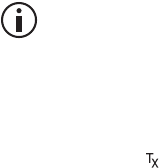
Operating in conventional mode 87
Adding or deleting member channels of a
group
Your radio may be programmed so you can add or
delete channels in a voting or scanning group.
Changes made are permanent, and will remain after
restarting the radio.
1Select the group. See "Selecting a group" on
page 69.
2Press Edit.
If there is no edit option for the left selection key,
the group cannot be changed.
Alternatively, you may be able to edit groups by
pressing Menu and selecting Advanced >
Program groups, then select the group you wish
to edit.
3In the Edit Group menu, choose Add channel or
Delete channel.
4Press Select.
5Press the scroll keys to select the channel that you
want to add or delete.
6Press OK.
If successful, the message Channel added or
Channel deleted appears.
To check the new group details, press Back
and select the Group members menu option.
Changing a group’s transmit channel
You may be able to change the transmit channel of a
standard scanning group. The transmit channel is
identified by the icon.
1Select the group. See "Selecting a group" on
page 69.
2Press Edit.
If there is no edit option for the left selection key,
the group cannot be changed.
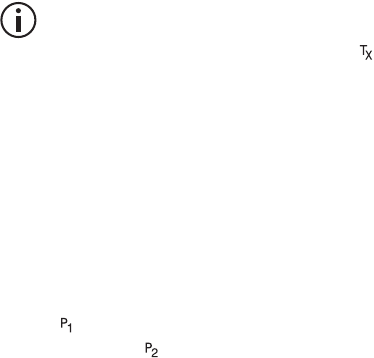
88 Operating in conventional mode
Alternatively, you may be able to edit groups by
pressing Menu and selecting Advanced >
Program groups, then select the group you wish
to edit.
3In the Edit Group menu, choose Change tx.
4Press Select.
5Press the scroll keys to select the new transmit
channel.
6Press OK.
If successful, the message Tx channel changed
appears.
To check the new group details, press Back
and select the Group members menu option.
The new transmit channel has the icon next
to it.
Changing a group’s first or second priority
channel
You may be able to change the priority channels of a
scanning group. Priority channels are scanned more
frequently than other channels in the group. If valid
activity is found on another channel, the radio
continues to scan the priority channel or channels at
regular intervals. The first priority channel is identified
by the icon, and the second priority channel is
identified by the icon.
1Select the group. See "Selecting a group" on
page 69.
2Press Edit.
If there is no edit option for the left selection key,
the group cannot be changed.
Alternatively, you may be able to edit groups by
pressing Menu and selecting Advanced >
Program groups, then select the group you wish
to edit.
3In the Edit Group menu, choose Change P1 or
Change P2.
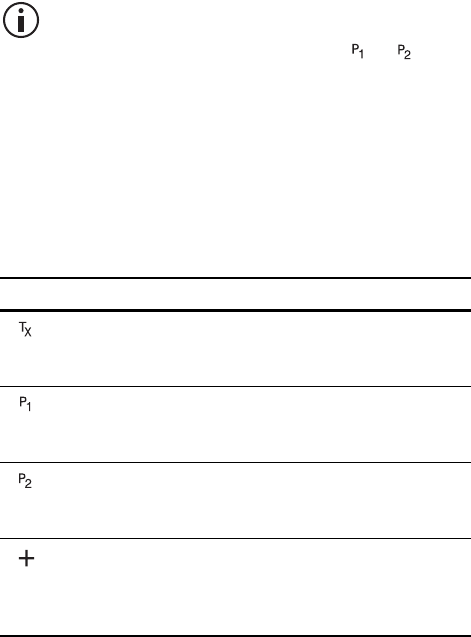
Operating in conventional mode 89
4Press Select.
5Press the scroll keys to select the new priority
channel.
6Press OK.
If successful, the message P1 channel changed or
P2 channel changed appears.
To check the new group details, press Back
and select the Group members menu option.
The new priority channel has the or icon
next to it.
Icon and messages that may appear when
changing group details
The following icons may appear when viewing group
membership details, adding or deleting channels from
a group, or changing a group’s transmit or priority
channels.
Icon Meaning
This channel is used to transmit on when there has
been no recent activity. You cannot delete this
channel (it will not appear under Delete channel).
This channel is the group’s first priority channel. You
cannot delete this channel (it will not appear under
Delete channel).
This channel is the group’s second priority channel.
You cannot delete this channel (it will not appear
under Delete channel).
There is more than one instance of this channel in
the group (the channel will be scanned more often).
If you delete this channel, the radio will attempt to
delete all instances of the channel.

90 Operating in conventional mode
The following messages may appear when using
nuisance delete to temporarily delete a channel from
a group, when adding or deleting channels from a
group, or changing a group’s transmit or priority
channels.
Message Meaning
Scanning not
on
You cannot use nuisance delete to temporarily
delete a channel from a group, as there is no
group currently selected.
No channel
captured
You cannot use nuisance delete to temporarily
delete a channel from the group, as there is no
channel currently captured (the orange LED is
glowing and not flashing).
Not enough
channels in
group
You cannot use nuisance delete to temporarily
delete the channel from the group, as the
captured channel is the last remaining group
member.
Cannot delete
channel
You cannot use nuisance delete to temporarily
delete the channel from the group. The captured
channel may be the selected channel in a
background scan group.
Cannot delete
priority chan
You cannot use nuisance delete to temporarily
delete the channel from the group, as the
captured channel is a priority channel.
Only two
channels in
group
You cannot delete a channel from the group, as
there would be only one group member left.
No items
in list
The action you are attempting is not allowed.
Either:
■the group does not have a preset transmit
channel or priority channels programmed, or
■you have added all the channels in the zone
to the current group.
Group full You cannot add any more channels to the group,
as the maximum number of members (50) has
been reached.

GPS location services 91
7 GPS location services
This section explains how to use the GPS location
services that may be available on your radio.
This feature is controlled by a software license
(SFE) and may not be available with your radio.
This section covers:
■About GPS location information
■About GPS status information
■Viewing GPS information

92 GPS location services
About GPS location information
If your radio is connected to an external GPS receiver,
you can view GPS location information such as
latitude and longitude, true course, speed, and
coordinated universal time. Your radio can also
display universal transverse mercator (UTM)
information such as the UTM zone, and northing and
easting coordinates.
Your radio may also be set up to send GPS
information.
About GPS status information
In the GPS Info menu, GPS status information
appears at the top right of the display.
The following GPS status information appears at the
top right of the display. Status information shown on a
hand-held control head is shown in brackets [ ].
■tracking [trk]: the GPS receiver is displaying
up-to-date satellite information.
■stored: the GPS receiver is having trouble
connecting to satellites and the radio is displaying
stored information that may not be current.
■lost cnx [no cnx]: the radio has lost serial
communications with the GPS receiver.
Zone: 55 tracking
Easting: 321025
Northing: 5812578
Exit
GPS status
information
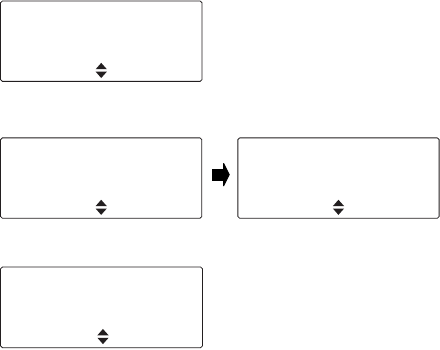
GPS location services 93
Viewing GPS information
1Press Menu and select Location Svs > GPS Info.
(Depending on how your radio is programmed, you
may be able to press a function key to access the
GPS Info menu.)
GPS information is now shown on the display, if it
is available.
2Use the scroll keys to view more GPS information.
3Press Exit to exit the GPS display.
In certain situations, your radio may automatically exit
the GPS display.
Zone: 55 tracking
Easting: 321025
Northing: 5812578
Exit
GPS Info tracking
S 37°49'00.0"
E 144°58'00.0"
Exit
GPS Info tracking
Course: 010"
Speed: 045km/h
Exit
GPS Info tracking
UTC time: 02:07:33
Exit
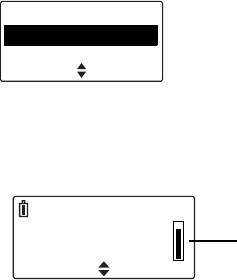
94 Loneworker monitoring
8 Loneworker monitoring
Loneworker monitoring is a safety feature for people
who work alone. Loneworker monitoring may be
programmed to be on or off at all times, or can be
switched on and off by the user using a programmed
function key or the menu.
A loneworker alarm is activated, if there has been no
user activity for a predetermined time.
When the predetermined time has expired, an audible
warning is given and you have a predetermined time
to respond to the loneworker situation.
If you are unable to respond, the radio either enters
emergency mode or (in trunked mode) sends a status
update to a predetermined person or talkgroup.
Activating loneworker
monitoring
1Press Menu and select Radio Settings > Extra
features > Loneworker. (Depending on how your
radio is programmed, you may be able to press a
function key to turn loneworker monitoring on and
off.)
2In the Loneworker menu, choose On.
A vertical scroll bar on the right-hand side of the
display indicates the remaining activity timeout.
SelectBack
Extra features
Loneworker
Channel 12
Menu
remaining
activity
timeout
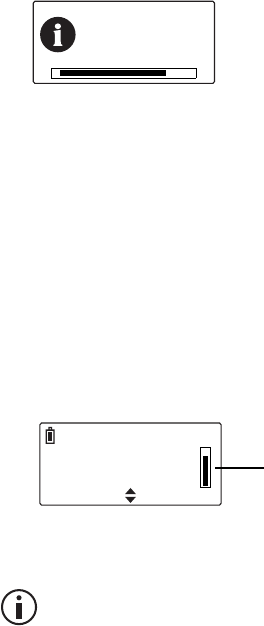
Loneworker monitoring 95
Responding to a loneworker
alarm
If you hear a beep to indicate that the radio is
expecting a response from you to acknowledge that
you are safe. The message “Loneworker awaiting”
and a horizontal scroll bar appear indicating the
remaining time until an emergency action is triggered.
■Press any key.
Otherwise the radio will activate emergency mode or
(in trunked mode) send a status update.
Delaying the emergency action
(conventional mode only)
In conventional mode, an additional emergency entry
delay may be programmed which allows you to press
a scroll key within a programmed time (usually 10
seconds) after the response time expires to delay the
emergency action.
You now have the opportunity to turn the radio off and
one to cancel the loneworker alarm.
The emergency action can be delayed only
once.
Loneworker
awaiting
Channel 12
Menu
emergency
entry delay
timeout

96 Customizing radio settings
9 Customizing radio
settings
This section describes the ways in which you can
customize your radio.
These features are common to radios operating
in either trunked or conventional mode.
This section covers:
■Changing the volume of all audible indicators
■Changing the volume of keypress tones
■Changing to quiet operation
■Changing to silent operation
■Changing the external alert option
■Turning on backlighting
■Adjusting the display contrast

Customizing radio settings 97
Changing the volume of all
audible indicators
You can set the volume of all the audible indicators to
either high or low. Audible tones include incoming call
tones, warning tones and confirmation tones.
To change the volume of your radio’s audible tones:
1Press Menu and select Radio settings >
Alert settings > Indicator level.
(Depending on how your radio is programmed, you
may be able to press a function key to change the
level of indicators.)
2Scroll to High (or Low) and press Select.
Changing the volume of
keypress tones
Whenever you press the radio keys, the keypress
tones give you an audible indication as to whether or
not your action is allowed. A short, medium-pitched
beep indicates that an action is allowed. A long, low-
pitched beep indicates that the action is not allowed.
To change the volume of your radio’s keypress tones:
1Press Menu and select Radio settings >
Alert settings > Keypress tones.
2Scroll to either Off, Low or High and press Select.
SelectBack
Alert settings
Indicator level
Keypress tones
SelectBack
Alert settings
Keypress tones
Quiet operation
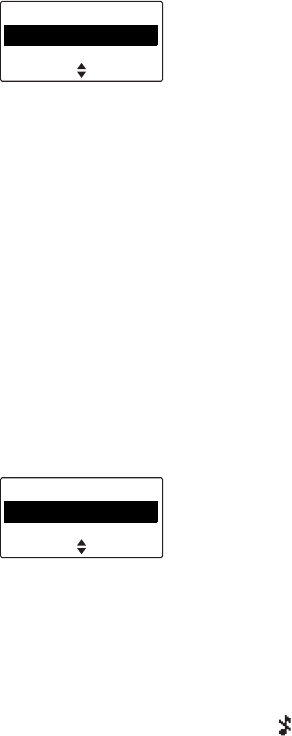
98 Customizing radio settings
Changing to quiet operation
When quiet operation is on, keypress tones and
confirmation tones are turned off. Incoming call tones,
signaling tones and warning tones all remain audible.
To turn quiet operation on or off:
1Press Menu and select Radio settings >
Alert settings > Quiet operation.
(Depending on how your radio is programmed, you
may be able to press a function key to toggle quiet
operation on and off.)
2Scroll to On (or Off) and press Select.
Changing to silent operation
When silent operation is on, all the radio’s audible
tones are turned off, and only channel traffic can be
heard.
To turn silent operation on or off:
1Press Menu and select Radio settings >
Alert settings > Silent operation.
2In the Silent Operation menu, scroll to either On or
Off and press Select.
(Depending on how your radio is programmed, you
may be able to press a function key to toggle silent
operation on and off.)
While silent operation in on, the icon appears in
the display.
SelectBack
Alert settings
Quiet operation
Silent operation
SelectBack
Alert settings
Silent operation
External alert

Customizing radio settings 99
Changing the external alert
option
If you are away from your radio and unable to answer
calls immediately, an external alert, such as a car
horn, may activate when you receive a call. The
external alert continues for a period of time and is then
turned off.
To turn external alert on or off:
1Press Menu and select Radio settings >
Alert settings > External alert.
(Depending on how your radio is programmed, you
may be able to press a function key to toggle
external alert on and off.)
2Scroll to either On or Off and press Select.
Turning on backlighting
Whenever a key is pressed or a call is received, the
keypad and display light up automatically.
Backlighting only remains on for a few seconds,
unless there is further radio activity. When
backlighting is turned on, it remains on until the setting
is changed to Off, regardless of radio activity.
To turn backlighting on or off:
1Press Menu and select Radio settings >
Display settings > Backlighting.
(Depending on how your radio is programmed, you
may be able to press a function key to toggle
backlighting on and off.)
SelectBack
Alert settings
External alert
Indicator level
SelectBack
Display settings
Backlighting
Contrast adjust

100 Customizing radio settings
2Scroll to either On or Off and press Select.
Turning backlighting on momentarily
You may be able to use a programmed function key to
turn backlighting on momentarily.
■Press the assigned function key to turn
backlighting on. Backlighting remains on for a few
seconds, and then turns off.
Alternatively, the function key may be programmed
so that:
■a short key press turns backlighting on
momentarily, and
■a long key press turns backlighting on, and it
remains on until there is a further long key press.
Adjusting the backlighting level
The radio’s display can also be make either darker or
lighter, to suit your working conditions.
To change the level of the backlighting:
1Press Menu and select Radio settings >
Display settings > Backlight level.
2Scroll to either Low, Medium or High, and press
Select.
SelectBack
Display settings
Backlight level
Backlighting
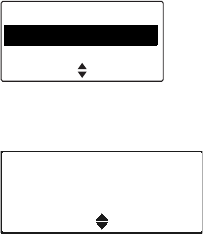
Customizing radio settings 101
Adjusting the display contrast
To change the contrast of your radio display to suit the
lighting conditions that you are working in:
1Press Menu and select Radio settings >
Display settings > Contrast adjust.
2Use the scroll keys to adjust the display contrast to
the level you want.
3Press Save to save this setting.
SelectBack
Display settings
Contrast adjust
RSSI
Use scroll keys
to adjust
SaveCancel

Troubleshooting 103
About troubleshooting
If you are experiencing difficulty operating your radio,
you may find the following sections helpful. Consult
your radio provider for assistance, if necessary.
When your radio won’t turn on
If the red, green and orange LEDs on the control head
do not light up when the radio is turned on, it is
probable that power is not reaching the radio. Check
the following:
■Is the power connector firmly plugged into the rear
of the radio?
■Are the in-line fuses in good condition?
■Is the power cable securely connected to the
vehicle battery or power supply?
If all appears to be in order, but your radio still fails to
operate properly, contact your radio provider for
further assistance.
Identifying the radio’s audible tones
The radio’s audible tones can help you identify a
potential problem:
Audible tone Meaning
One short,
high-pitched
beep
The radio has been made inoperable
(‘stunned’ or ‘inhibited’) by your
service provider.
Two short
beeps
The radio has been made operable
(‘revived’ or ‘uninhibited’) by your
service provider.
Two low-
pitched beeps
The radio’s temperature is high. (The
radio will continue to operate.)

104 Troubleshooting
Checking the version of your
radio
Your radio provider may ask you for the hardware
and firmware version of your radio, for
troubleshooting purposes.
Using the Main menu
1Press Menu and select Radio info > Version info.
2Scroll to the version information you want to view
and press Select.
Using the PTT key (not with hand-held control
head)
■Hold down the PTT key and turn on the radio.
The firmware and hardware versions, and your
radio’s frequency band is briefly displayed.
Two high-
pitched beeps
The radio’s temperature is in the very
high range; all calls will now be at low
power. If the radio’s temperature rises
above this range, calls will be
inhibited.
Turn off the radio and allow it to cool
down.
Continuous
low-pitched
tone
Radio system error: a system error
has occurred and the radio may be
inoperable. Contact your radio
provider.
Audible tone Meaning
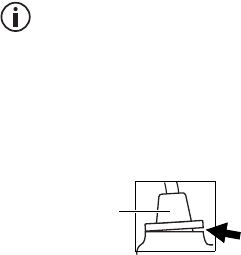
Troubleshooting 105
Removing the microphone
For information on installing or removing your
radio from a vehicle, refer to the Installation
Guide.
1Using your thumb or forefinger, lift up one of the
corners of the microphone grommet and firmly (but
gently) pull that corner until the seal comes away
from the cavity.
Notice Remove the grommet carefully as it serves
two important functions. Firstly, it prevents damage to
the microphone socket due to movement of the
microphone cord, and secondly, it ensures that the
control head is sealed against water, dust, and other
environmental hazards.
2Repeat to expose another corner.
3Pull the exposed corners back and slide the
grommet up the cable to reveal the microphone
plug.
4Remove the plug from the microphone socket.
General care
Your radio requires no regular maintenance other
than ensuring that all the cables and connections are
secure, and that no damage has occurred to the
antenna or wiring.
To prevent permanent damage to the radio cover, do
not allow the radio to come into contact with
detergents, alcohol, aerosol sprays or petroleum-
based products.
If you need to clean the radio cover, use a cloth
dampened with clean water. Do not immerse the radio
in fluids.
microphone
grommet

106 Directive 1999/5/CE Declaration of Conformity
Directive 1999/5/CE Declaration of Conformity
da Dansk
Undertegnede Tait Limited erklærer
herved, at følgende udstyr TMBB1A &
TMBH5A overholder de væsentlige krav
og øvrige relevante krav i
direktiv 1999/5/EF.
Se endvidere:
www.taitradio.com/eudoc/
de Deutsch
Hiermit erklärt Tait Limited die Überein-
stimmung der Geräte TMBB1A & TMBH5A
mit den grundlegenden Anforderungen
und den anderen relevanten Festlegungen
der Richtlinie 1999/5/EG.
Siehe auch:
www.taitradio.com/eudoc/
el Ελληνικά
Η Tait Limited δηλώνει ότι το TMBB1A &
TMBH5A συμμορφώνεται προς τις
ουσιώδεις απαιτήσεις και τις λοιπές
σχετικές διατάξεις της Οδηγίας 1999/5/ΕΚ.
Βλέπε επίσηςι:
www.taitradio.com/eudoc/
en English
Tait Limited declares that this TMBB1A &
TMBH5A complies with the essential
requirements and other relevant provisions
of Directive 1999/5/EC.
See also:
www.taitradio.com/eudoc/
es Español
Por medio de la presente Tait Limited
declara que las radios TMBB1A &
TMBH5A cumplen con los requisitos
esenciales y cualesquiera otras
disposiciones aplicables o exigibles de la
Directiva 1999/5/CE. Véase también:
www.taitradio.com/eudoc/
fi Suomi
Tait Limited vakuuttaa täten että TMBB1A
& TMBH5A tyyppinen laite on direktiivin
1999/5/EY oleellisten vaatimusten ja sitä
koskevien direktiivin muiden ehtojen
mukainen.
Katso:
www.taitradio.com/eudoc/
fr Français
Par la présente, Tait Limited déclare que
les appareils TMBB1A & TMBH5A sont
conformes aux exigences essentielles et
aux autres dispositions pertinentes de la
directive 1999/5/CE.
Voir aussi:
www.taitradio.com/eudoc/
it Italiano
Con la presente Tait Limited dichiara che
questo TMBB1A & TMBH5A è conforme ai
requisiti essenziali ed alle altre disposizioni
pertinenti stabilite dalla direttiva
1999/5/CE.
Vedi anche:
www.taitradio.com/eudoc/
nl Nederlands
Hierbij verklaart Tait Limited dat het toestel
TMBB1A & TMBH5A in overeenstemming
is met de essentiële eisen en de andere
relevante bepalingen van richtlijn 1999/5/
EG.
Zie ook:
www.taitradio.com/eudoc/
pt Português
Tait Limited declara que este TMBB1A &
TMBH5A está conforme com os requisitos
essenciais e outras provisões da Directiva
1999/5/CE.
Veja também:
www.taitradio.com/eudoc/
sv Svensk
Härmed intygar Tait Limited att denna
TMBB1A & TMBH5A står I
överensstämmelse med de väsentliga
egenskapskrav och övriga relevanta
bestämmelser som framgår av direktiv
1999/5/EG.
Se även:
www.taitradio.com/eudoc/
Tait Software Licence Agreement 107
Tait Software Licence Agreement
This Software License Agreement
("Agreement") is between you
(“Licensee”) and Tait Limited (“Tait").
By using any of the Software items
embedded and pre-loaded in the
related Tait Designated Product,
included on CD, downloaded from the
Tait website, or provided in any other
form, you agree to be bound by the
terms of this Agreement. If you do not
agree to the terms of this Agreement,
do not install or use any of the
Software. If you install or use any of
the Software, that will be deemed to be
acceptance of the terms of this
Agreement.
For good and valuable consideration,
the parties agree as follows:
SECTION 1 DEFINITIONS
“Confidential Information” means all
or any information supplied to or
received by Licensee from Tait,
whether before or after installation or
use and whether directly or indirectly
pertaining to the Software and
Documentation supplied by Tait,
including without limitation all
information relating to the Designated
Products, hardware, software;
copyright, design registrations,
trademarks; operations, processes,
and related business affairs of Tait;
and including any other goods or
property supplied by Tait to Licensee
pursuant to the terms of this
Agreement.
“Designated Products” means
products provided by Tait to Licensee
with which or for which the Software
and Documentation is licensed for
use.
“Documentation” means product and
software documentation that specifies
technical and performance features
and capabilities; user, operation, and
training manuals for the Software; and
all physical or electronic media upon
which such information is provided.
“Executable Code” means Software
in a form that can be run in a computer
and typically refers to machine
language, which is comprised of native
instructions the computer carries out in
hardware. Executable code may also
refer to programs written in interpreted
languages that require additional
software to actually execute.
“Intellectual Property Rights” and
“Intellectual Property” mean the
following or their substantial
equivalents or counterparts,
recognized by or through action before
any governmental authority in any
jurisdiction throughout the world and
including, but not limited to all rights in
patents, patent applications,
inventions, copyrights, trademarks,
trade secrets, trade names, and other
proprietary rights in or relating to the
Software and Documentation;
including any adaptations, corrections,
de-compilations, disassemblies,
emulations, enhancements fixes,
modifications, translations and
updates to or derivative works from,
the Software or Documentation,
whether made by Tait or another party,
or any improvements that result from
Tait processes or, provision of
information services.
“Licensee” means any individual or
entity that has accepted the terms of
this License.
“Open Source Software” means
software with freely obtainable source
code and license for modification, or
permission for free distribution.
“Open Source Software License”
means the terms or conditions under
which the Open Source Software is
licensed.
108 Tait Software Licence Agreement
“Person” means any individual,
partnership, corporation, association,
joint stock company, trust, joint
venture, limited liability company,
governmental authority, sole
proprietorship, or other form of legal
entity recognized by a governmental
authority.
“Security Vulnerability” means any
flaw or weakness in system security
procedures, design, implementation,
or internal controls that if exercised
(accidentally triggered or intentionally
exploited) could result in a security
breach such that data is compromised,
manipulated, or stolen, or a system is
damaged.
“Software” (i) means proprietary
software in executable code format,
and adaptations, translations, de-
compilations, disassemblies,
emulations, or derivative works of
such software; (ii) means any
modifications, enhancements, new
versions and new releases of the
software provided by Tait; and (iii) may
contain one or more items of software
owned by a third-party supplier. The
term "Software" does not include any
third-party software provided under
separate license or not licensable
under the terms of this Agreement.
“Source Code” means software
expressed in human readable
language necessary for
understanding, maintaining,
modifying, correcting, and enhancing
any software referred to in this
Agreement and includes all states of
that software prior to its compilation
into an executable programme.
“Tait” means Tait Limited and
includes its Affiliates.
SECTION 2 SCOPE
This Agreement contains the terms
and conditions of the license Tait is
providing to Licensee, and of
Licensee’s use of the Software and
Documentation. Tait and Licensee
enter into this Agreement in
connection with Tait delivery of certain
proprietary Software and/or products
containing embedded or pre-loaded
proprietary Software.
SECTION 3 GRANT OF
LICENSE
3.1. Subject to the provisions of this
Agreement and the payment of
applicable license fees, Tait grants to
Licensee a personal, limited, non-
transferable (except as permitted in
Section 7), and non-exclusive license
to use the Software in executable code
form, and the Documentation, solely in
connection with Licensee's use of the
Designated Products for the useful life
of the Designated Products. This
Agreement does not grant any rights to
source code.
3.2. If the Software licensed under this
Agreement contains or is derived from
Open Source Software, the terms and
conditions governing the use of such
Open Source Software are in the Open
Source Software Licenses of the
copyright owner and not in this
Agreement. If there is a conflict
between the terms and conditions of
this Agreement and the terms and
conditions of the any applicable Open
Source Software Licenses, the terms
and conditions of the Open Source
Software Licenses will take
precedence. For information about
Open Source Components contained
in Tait products and the related Open
Source licenses, see:
http://support.taitradio.com/go/
opensource
SECTION 4 LIMITATIONS ON
USE
4.1. Licensee may use the Software
only for Licensee's internal business
purposes and only in accordance with
the Documentation. Any other use of
the Software is strictly prohibited.
Without limiting the general nature of
these restrictions, Licensee will not
make the Software available for use by
Tait Software Licence Agreement 109
third parties on a "time sharing,"
"application service provider," "service
bureau" basis, or for any other similar
commercial rental or sharing
arrangement.
4.2. Licensee will not, and will not
directly or indirectly allow or enable
any third party to: (i) reverse engineer,
disassemble, extract components,
decompile, reprogram, or otherwise
reduce the Software or any portion
thereof to a human perceptible form or
otherwise attempt to recreate the
source code; (ii) modify, adapt, create
derivative works of, or merge the
Software; (iii) copy, reproduce,
distribute, lend, or lease the Software
or Documentation to any third party;
(iv) grant any sublicense or other rights
in the Software or Documentation to
any third party; (v) take any action that
would cause the Software or
Documentation to be placed in the
public domain; (vi) remove, or in any
way alter or obscure any copyright
notice or other notice of Tait or third-
party licensor’s proprietary rights; (vii)
provide, copy, transmit, disclose,
divulge or make the Software or
Documentation available to, or permit
the use of the Software by, any third
party or on any machine except as
expressly authorized by this
Agreement; or (viii) use, or permit the
use of, the Software in a manner that
would result in the production of a copy
of the Software by any means
whatsoever other than what is
permitted in this Agreement. Licensee
may make one copy of the Software to
be used solely for archival, back-up, or
disaster recovery purposes; provided
that Licensee may not operate that
copy of the Software at the same time
as the original Software is being
operated. Licensee may make as
many copies of the Documentation as
it may reasonably require for the
internal use of the Software.
4.3. Unless otherwise authorized by
Tait in writing, Licensee will not, and
will not enable or allow any third party
to: (i) install a copy of the Software on
more than one unit of a Designated
Product; or (ii) copy or transfer
Software installed on one unit of a
Designated Product to any other
device. Licensee may temporarily
transfer Software installed on a
Designated Product to another device
if the Designated Product is inoperable
or malfunctioning. Temporary transfer
of the Software to another device must
be discontinued when the original
Designated Product is returned to
operation and the Software must be
removed from the other device.
4.4. Licensee will maintain, during the
term of this Agreement and for a
period of two years thereafter,
accurate records relating to this
license grant to verify compliance with
this Agreement. Tait, or a third party
nominated by Tait, may inspect
Licensee’s premises, books and
records, upon reasonable prior notice
to Licensee, during Licensee’s normal
business hours and subject to
Licensee's facility and security
regulations. Tait is responsible for the
payment of all expenses and costs of
the inspection, provided that Licensee
shall indemnify Tait for all costs
(including audit costs and legal costs
on a solicitor client basis) if Licensee
has breached the terms of this
Agreement. Any information obtained
by Tait during the course of the
inspection will be kept in strict
confidence by Tait and used solely for
the purpose of verifying Licensee's
compliance with the terms of this
Agreement.
SECTION 5 OWNERSHIP AND
TITLE
Tait, its licensors, and its suppliers
retain all of their Intellectual Property
Rights in and to the Software and
Documentation, in any form. No rights
are granted to Licensee under this
Agreement by implication, estoppel or
110 Tait Software Licence Agreement
otherwise, except for those rights
which are expressly granted to
Licensee in this Agreement. All
Intellectual Property developed,
originated, or prepared by Tait in
connection with providing the
Software, Designated Products,
Documentation, or related services,
remains vested exclusively in Tait, and
Licensee will not have any shared
development or other Intellectual
Property Rights.
SECTION 6 LIMITED
WARRANTY; DISCLAIMER
OF WARRANTY
6.1. The commencement date and the
term of the Software warranty will be a
period of one (1) year from Tait
shipment of the Software. If Licensee
is not in breach of any obligations
under this Agreement, Tait warrants
that the unmodified Software, when
used properly and in accordance with
the Documentation and this
Agreement, will be free from a
reproducible defect that eliminates the
functionality or successful operation of
a feature critical to the primary
functionality or successful operation of
the Software. Whether a defect has
occurred will be determined solely by
Tait. Tait does not warrant that
Licensee’s use of the Software or the
Designated Products will be
uninterrupted, error-free, completely
free of Security Vulnerabilities, or that
the Software or the Designated
Products will meet Licensee’s
particular requirements. Tait makes no
representations or warranties with
respect to any third-party software
included in the Software.
6.2 Tait sole obligation to Licensee,
and Licensee’s exclusive remedy
under this warranty, is to use
reasonable efforts to remedy any
material Software defect covered by
this warranty. These efforts will involve
either replacing the media or
attempting to correct significant,
demonstrable program or
documentation errors or Security
Vulnerabilities. If Tait cannot correct
the defect within a reasonable time,
then at Tait option, Tait will replace the
defective Software with functionally
equivalent Software, license to
Licensee substitute Software which
will accomplish the same objective, or
terminate the license and refund
Licensee’s paid license fee. If Tait
investigation of the perceived defect
reveals that no such defect in fact
exists, Tait may recover its costs in
respect of such investigation from
Licensee.
6.3. Tait disclaims any and all other
warranties relating to the Software or
Documentation other than the express
warranties set forth in this Section 6.
Warranties in Section 6 are in lieu of all
other warranties whether express or
implied, oral or written, and including
without limitation any and all implied
warranties of condition, title, non-
infringement, merchantability, or
fitness for a particular purpose or use
by Licensee (whether Tait knows, has
reason to know, has been advised of,
or is otherwise aware of any such
purpose or use), whether arising by
law, by reason of custom or usage of
trade, or by course of dealing. In
addition, Tait disclaims any warranty
to any person other than Licensee with
respect to the Software or
Documentation.
SECTION 7 TRANSFERS
7.1. Licensee will not transfer the
Software or Documentation to any
third party without specific prior written
consent from Tait. Tait may withhold
such consent or at its own discretion
make the consent conditional upon the
transferee paying applicable license
fees and agreeing to be bound by this
Agreement.
7.2. In the case of a value-added
reseller or distributor of Tait
Designated Products, the consent
Tait Software Licence Agreement 111
referred to in Section 7.1 may be
contained in a Tait Reseller or Tait
Distributor Agreement.
7.3. If the Designated Products are
Tait vehicle-mounted mobile products
or hand-carried portable radio
products and Licensee transfers
ownership of the Tait mobile or
portable radio products to a third party,
Licensee may assign its right to use
the Software which is embedded in or
furnished for use with the radio
products and the related
Documentation; provided that
Licensee transfers all copies of the
Software and Documentation to the
transferee.
7.4. For the avoidance of any doubt,
Section 7.3 excludes TaitNet
Infrastructure, or the products listed at
any time under network products at:
http://www.taitradio.com.
7.5. If Licensee, as a contractor or
subcontractor (integrator), is
purchasing Tait Designated Products
and licensing Software not for its own
internal use but for end use only by a
Customer, the Licensee may transfer
such Software, but only if a) Licensee
transfers all copies of such Software
and the related Documentation to the
transferee and b) Licensee has first
obtained from its Customer (and, if
Licensee is acting as a subcontractor,
from the interim transferee(s) and from
the ultimate end user sub license) an
enforceable sublicense agreement
that prohibits any other transfer and
that contains restrictions substantially
identical to the terms set forth in this
Software License Agreement. Except
as stated in the foregoing, Licensee
and any transferee(s) authorised by
this Section may not otherwise
transfer or make available any Tait
Software to any third party nor permit
any party to do so. Licensee will, on
request, make available evidence
reasonably satisfactory to Tait
demonstrating compliance with all the
foregoing.
SECTION 8 TERM AND
TERMINATION
8.1. Licensee’s right to use the
Software and Documentation will
commence when the Designated
Products are supplied by Tait to
Licensee and will continue for the life
of the Designated Products with which
or for which the Software and
Documentation are supplied, unless
Licensee breaches this Agreement, in
which case this Agreement and
Licensee's right to use the Software
and Documentation may be
terminated immediately upon notice by
Tait.
8.2. Within thirty (30) days after
termination of this Agreement,
Licensee must certify in writing to Tait
that all copies of the Software have
been removed or deleted from the
Designated Products and that all
copies of the Software and
Documentation have been returned to
Tait or destroyed by Licensee and are
no longer in use by Licensee.
8.3. Licensee acknowledges that Tait
made a considerable investment of
resources in the development,
marketing, and distribution of the
Software and Documentation and that
Licensee's breach of this Agreement
will result in irreparable harm to Tait for
which monetary damages would be
inadequate. If Licensee breaches this
Agreement, Tait may terminate this
Agreement and be entitled to all
available remedies at law or in equity
including immediate injunctive relief
and repossession of all non-
embedded Software and associated
Documentation. Licensee shall pay all
Tait costs (on an indemnity basis) for
the enforcement of the terms of this
Agreement.
SECTION 9 CONFIDENTIALITY
Licensee acknowledges that the
Software and Documentation contain
proprietary and Confidential
Information valuable to Tait and are
112 Tait Software Licence Agreement
Tait trade secrets, and Licensee
agrees to respect the confidentiality of
the information contained in the
Software and Documentation.
SECTION 10 LIMITATION OF
LIABILITY
10.1. In no circumstances shall Tait be
under any liability to Licensee, or any
other person whatsoever, whether in
Tort (including negligence), Contract
(except as expressly provided in this
Agreement), Equity, under any
Statute, or otherwise at law for any
losses or damages whether general,
special, exemplary, punitive, direct,
indirect, or consequential arising out of
or in connection with any use or
inability of using the Software.
10.2. Licensee’s sole remedy against
Tait will be limited to breach of contract
and Tait sole and total liability for any
such claim shall be limited at the
option of Tait to the repair or
replacement of the Software or the
refund of the purchase price of the
Software.
SECTION 11 GENERAL
11.1. COPYRIGHT NOTICES. The
existence of a copyright notice on the
Software will not be construed as an
admission or presumption of
publication of the Software or public
disclosure of any trade secrets
associated with the Software.
11.2. COMPLIANCE WITH LAWS.
Licensee acknowledges that the
Software may be subject to the laws
and regulations of the jurisdiction
covering the supply of the Designated
Products and will comply with all
applicable laws and regulations,
including export laws and regulations,
of that country.
11.3. ASSIGNMENTS AND
SUBCONTRACTING. Tait may assign
its rights or subcontract its obligations
under this Agreement, or encumber or
sell its rights in any Software, without
prior notice to, or consent of, Licensee.
11.4. GOVERNING LAW. This
Agreement shall be subject to and
construed in accordance with New
Zealand law and disputes between the
parties concerning the provisions
hereof shall be determined by the New
Zealand Courts of Law. Provided
however Tait may at its election bring
proceedings for breach of the terms
hereof or for the enforcement of any
judgment in relation to a breach of the
terms hereof in any jurisdiction Tait
considers fit for the purpose of
ensuring compliance with the terms
hereof or obtaining relief for breach of
the terms hereof.
11.5. THIRD-PARTY
BENEFICIARIES. This Agreement is
entered into solely for the benefit of
Tait and Licensee. No third party has
the right to make any claim or assert
any right under this Agreement, and no
third party is deemed a beneficiary of
this Agreement. Notwithstanding the
foregoing, any licensor or supplier of
third-party software included in the
Software will be a direct and intended
third-party beneficiary of this
Agreement.
11.6. SURVIVAL. Sections 4, 5, 6.3, 7,
8, 9, 10, and 11 survive the termination
of this Agreement.
11.7. ORDER OF PRECEDENCE. In
the event of inconsistencies between
this Agreement and any other
Agreement between the parties, the
parties agree that, with respect to the
specific subject matter of this
Agreement, this Agreement prevails.
11.8. SECURITY. Tait uses
reasonable means in the design and
writing of its own Software and the
acquisition of third-party Software in
order to limit Security Vulnerabilities.
While no software can be guaranteed
to be free from Security Vulnerabilities,
if a Security Vulnerability is
discovered, Tait will take the steps
specified in Section 6 of this
Agreement.
Tait Software Licence Agreement 113
11.9. EXPORT. Licensee will not
transfer, directly or indirectly, any
Designated Product, Documentation
or Software furnished hereunder or the
direct product of such Documentation
or Software to any country for which
New Zealand or any other applicable
country requires an export license or
other governmental approval without
first obtaining such license or
approval.
11.10. SEVERABILITY. In the event
that any part or parts of this Agreement
shall be held illegal or null and void by
any court or administrative body of
competent jurisdiction, such
determination shall not affect the
remaining terms which shall remain in
full force and effect as if such part or
parts held to be illegal or void had not
been included in this Agreement. Tait
may replace the invalid or
unenforceable provision with a valid
and enforceable provision that
achieves the original intent and
economic effect of this Agreement.
11.11. CONSUMER GUARANTEES.
Licensee acknowledges that the
licenses supplied in terms of this
agreement are supplied to Licensee in
business, and that the guarantees and
other provisions of prevailing
consumer protection legislation shall
not apply.
11.12. WHOLE AGREEMENT.
Licensee acknowledges that it has
read this Agreement, understands it
and agrees to be bound by its terms
and conditions. Licensee also agrees
that, subject only to the express terms
of any other agreement between Tait
and Licensee to the contrary, this is
the complete and exclusive statement
of the Agreement between it and Tait
in relation to the Software. This
Agreement supersedes any proposal
or prior agreement, oral or written, and
any other communications between
Licensee and Tait relating to the
Software and the Designated
Products.
114 Tait Software Licence Agreement
